UNI N THE



By Namana Balakrishna
Almost a whole school year has passed since Innovation Campus opened to students. Construction is currently happening for phase three, for almost a year now, according to the presentation from Aaron Jozlen from QKA from the April 22, 2025 Board meeting.
The Workforce Development Center will be built as part of phase three, Chief Business Executive Officer Dorothy Reconose said. It will also be opened to the community to use for whatever they need, Reconose said. At the same time, the district will also use The Workforce Development Center for their programs and other events, she added.
“The board will use it (Workforce Development Center) for board meetings,” Reconose said. “It’s kind of like a multi-purpose room. And our hope is that we open our doors to the community and that we collaborate more, and we can have some partnership with other private organizations that would come and support our
program, and then we will use that space for that program.”
Another child development center will be added to the Innovation Campus as part of phase three, Reconose said. The children who attend the program and qualify for extra financial support from the state will help the school district earn more funds, she added.
“If their income is qualified to be subsidized by the state, then they won’t have to pay anything, because we will claim that to the state,” Reconose said. “The state will give us the funds, but if they make beyond then the parents will pay us, and we don’t report them to the state because they’re not qualified as part of their students. So that’s one way for us to bring funds, to use it to run the program.”
Calaveras Montessori School of Silicon Valley, which is currently at the front of the Innovation Campus, will be moving out to make room for phase three, Reconose said. Montessori will
be moving out in late June, and demolition will start in August, she added.
“They’re doing all the initial work that needs to be done, and then they’re gonna demolish that old theater and Montessori down to the ground so they can start the work,” Reconose said. “That’s what we’re looking for. We’re looking at phase three, which will be completed in about a year and a half.”
Currently, 74 ninth and 10th graders are enrolled in the innovation campus, Principal and Chief Innovator of Milpitas High School and New Campus Programs Greg Wohlman said. Next year, the campus is open for incoming ninth, 10th, and 11th graders to apply, he added.
“Originally, we tried to open a nine through 12, and we were expecting a huge influx of students,” Wohlman said. “We only had one senior and a couple juniors interested that time. The rest of the
SEE PAGE 20

By Marie De Vré
Business directors from districts across California, including Chief Business Officer Dorothy Reconose, were brought together to discuss potential changes to state funding for public schools on April 9, Reconose said.
California bases the amount of funding for each school on the Local Control Funding Formula (LCFF), which is part of Proposition 98, a proposition dedicated to monitoring the funding and its use for public schools, according to the California Department of Education (CDE)’s website. LCFF funding includes base grants and concentration grants that are based on student demographics, according to the website.
The level of funding is determined based on the district’s average daily attendance (ADA) rate, which the district must re-
port to the CDE three times a year, Director of Business Services Trang Vo said. The money for the funding comes from both local property taxes and the California government, making the district a state-funded district, Vo added.
“Part of Prop 98 is filled partially; it’s filled partially by local property taxes, and then the state backfills in the dollar amount,” Vo said. “For example, through the LCFF, we have a funding formula. So it’s a $1 amount per student at each grade level, and so then that’s what you’re allocated for the district. And if the local property tax money that we receive is not enough, the state then has to backfill that amount.”
The LCFF calculator takes the highest average daily attendance rate from the data the district has collected over the past three years, Reconose said. The district
is only funded based on the percentage of students who attend school and not the total number of students enrolled, which causes them to lose funding due to absenteeism, she said.
“Attendance is important because we want the student to learn,” Reconose said. “We want them to be present at the school so they are learning something. But the bonus of that is it helps the district for additional funding because the students are present and learning in the classroom. When the student is not in the classroom, they miss what they’re learning that day, and we lose money.”
The CDE also monitors enrollment to catch any funding errors, Reconose said. Recently the CDE heard that some districts were bringing up the idea of becom-
SEE PAGE 20

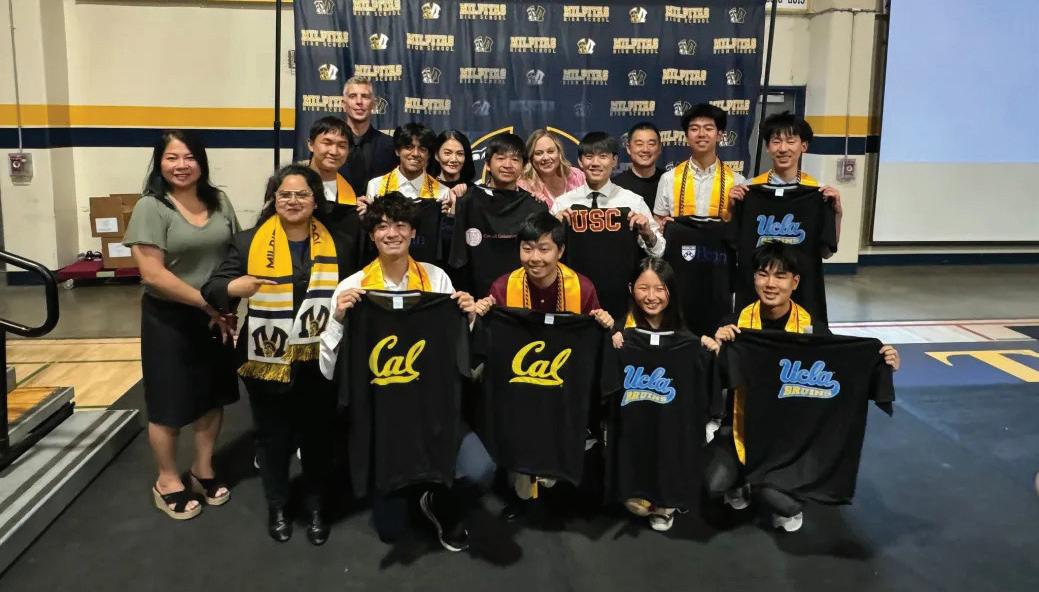
By Alice Nguyen
At Senior Awards Night on May 21, 488 seniors received awards, including a total of around $43,000 in scholarships, Principal and Chief Innovator of Milpitas High School and New Campus Programs Greg Wohlman said.
Seven seniors received the California Scholarship Federation award, seven received the National Honor Society award, and nine seniors were National Merit Finalists, according to the program distributed during Senior Awards Night.
Additionally, the Maroon Cord, given out to students who have accumulated over 150 community service hours, was awarded to 148 seniors and 416 seniors received the Golden State Seal.
The Magna Cum Laude and the Summa Cum Laude honors were awarded to 165 and 177 seniors, respectively.
Ashton Chen was named as the valedictorian of the class of 2025. Chen also received the Golden
State Seal, the State Seal of Biliteracy, the President’s Education Award, the National Honor Society Award, the Maroon Cord, and the Magna and Summa Cum Laude, Chen said.
“I’m incredibly fortunate that throughout my time at MHS, along with the amount of work that I put in, I was very, very lucky in my educators,” Chen said. “I was able to have a schedule and a support system because of the classes that I took that allowed me to really push myself to my limits as well as bring up my full potential.”
Chen is going to the University of Southern California to major in business administration with an emphasis in pre-law, he said. He was also invited to their Progressive Degree Program, which allows him to graduate in four years with his MBA and his masters, although he still has to apply, Chen said.
“I hope to see myself being ei-
SEE PAGE 20
By Harold Hong
The LCAP (Local Control and Accountability Plan) is a district plan to set goals, plan actions, and allocate resources towards improving student outcomes as a community, LCAP lead and Executive Director of Learning and Innovation Priti Johari said at the MUSD board meeting on May 13, 2025.
The committee extracts its data from 38 LCAP metrics, three district committees (Community Design Team, Differentiated Assistance, and LCAP), and four surveys (Climate and Culture, Educator, Family Engagement, and Thought Exchange), Milpitas High School teacher Brett Webber said at the board meeting. The committee plans some of its actions based on the survey results and responses, he said.
People are generally positive about the academic programming and curriculum in the MUSD schools, Johari said at the board meeting. The committee is also looking into professional development and more support staff for specialized students, she added.
The LCAP metrics list the
district as having highly qualified teachers and a 99% teacher retention rate, Coordinator II, English Learners and Math/Literacy Intervention Programs Dr. Shannon Soza said at the board meeting. The committee is also strengthening its tier one and tier two systems of support, she added.
“We know that there are a wide range of needs in the classroom, and one of the ways we’re trying to support that is through high-impact tutoring and professional development for our teachers,” Soza said. “With high-impact tutoring, we have offered over 4500 hours of tutoring to our students, and for April Academy, we have offered an additional 30 hours of instruction. So we’re really trying to create these unified systems of support for our students.”
Community members say what needs improvement and what works in the surveys, Parent and Community Design team member Elaine Silveria said. A topic that stood out in recent years was mental health awareness, she added.
SEE PAGE 20
Recent tariffs from the Trump administration have thrown world trade into disarray, and some economists, such as those from the Harvard Kennedy School, say these tariffs will hurt the U.S. However, tariffs may cost consumers but will strengthen American manufacturing.
Currently, the vast majority of goods sold in the U.S. come from China, according to “Trump Tariffs: What Products do China and the US Buy from Each Other” from Al Jazeera.

These include 81% of smartphone imports and 78% of computer monitors. The export of these goods from China gives them an advantage, as cutting off these exports would cripple the U.S. market. Cutting off the export of goods to America would prompt the U.S. government to focus on the emergency at home, according to a study by the Center for Strategic and International Studies. This is especially concerning as times of war may not be too far away, especially with the US committing to the defense of Taiwan and the war in Ukraine.
Tariffs function to limit access to the American market for companies that manufacture in China, increasing the prices of their goods and bringing them out of reach, according to the Budget Lab at Yale University. Thus, tariffs would force companies to manufacture within
the U.S. to avoid the extra cost. An immediate example of this is Apple’s $500 billion investment over the next 4 years in U.S. manufacturing announced after Trump’s tariffs. The transition to manufacturing in the US does not happen overnight, which is why consumers in the U.S. face higher prices and are “hurt,” in the words of economists. But at the same time, it serves to make America more self-sufficient in the long run. The benefits of making the trade deficit lower through American manufacturing is seen immediately with regard to critical resources. China has a monopoly on the production of rare earths, and cutting off these materials would throw defense production into disarray, according to Polytechnique Insights. Hence, we also see efforts from Trump to get these materials from other places like Ukraine, with the recently signed rare earth metals deal, and Greenland.
The tariffs are not great for the American consumer in the short run, but they serve to force companies to produce within the US. Eventually, tariffs will create jobs, good prices for consumers, quality in production, and boost national security. Without tariffs, companies would inevitably extend deadlines to set up manufacturing, and develop workarounds rather than setting up manufacturing.
President Donald Trump's erratic implementation of tariffs on a range of imported goods is an attempt to revitalize the U.S. economy by encouraging American manufacturing, which Trump claims will create jobs, enhance national security, and lower dependence on foreign goods. However, much evidence suggests it is not feasible for the U.S. to shift to domestic production.
American manufacturing will only increase if businesses decide it is worthwhile to invest, which is unlikely if policies continue to rapidly change. Policies can flip almost instantly, as shown by the closing of the de minimis exemption, which allowed packages from China under $800 in value to be exempt. This closure was paused shortly after to allow federal agencies to figure out how to collect the duties.
will not make any investments. Thus, the disorder with which Trump implements tariffs will make businesses hesitate to commit to investments.
Moreover, tariffs create uncertainty about what investments to make, according to "Trump’s erratic trade policies are baffling businesses, threatening investment and economic growth" by the Associated Press. These factors include which suppliers to use, where to put factories, and how much they should charge.

Another example of the fluctuation was when the Trump administration announced tax rates for nations that run trade surpluses with the U.S. to take effect after one week, according to the Associated Press. However, hours after the deadline, the Trump administration announced that they would suspend most of the rates for 90 days. A similar situation occurred on April 29, when Trump signed executive orders to ease his 25% tariff on auto imports he announced a month earlier.
If companies do not have a good understanding of how tariffs will be implemented, they
With the popularity of social media websites like Instagram, Facebook, TikTok, and X (formerly Twitter), it is no surprise that people are using these websites to receive news. Currently, 54% of American adults say that they sometimes use social media to get their news, according to the Pew Research Center. This rate is concerning because information online can be unreliable.
The main problem with getting news from social media is the fact that this information is usually not factchecked. On social media websites, any user can post information without having to go through a fact-checking process. In fact, 20% of the search results for top news stories on TikTok contained some misinformation, according to a 2022 NewsGuard study.
Another issue with getting information from social media is the fact that one cannot easily verify if the info is even real, as artificial intelligence (AI) technology becomes more sophisticated. Even if the artificial content is reporting on true events,
it cannot be reliable. This occurs because AI models use large amounts of data to generate content; however, there’s no verification that the training data was factual. Also, it is easy to make authentic-looking content that is not based in fact. This is concerning because of how prominent artificial content is on social media—Facebook even promotes it, according to the Stanford Cyber Policy Center. Whether content is created by artificial means or by individuals, it is still unreliable. Any person wishing to comment on a current issue online can do so, without needing any expertise. Furthermore, there is no way to verify claimed expertise either, and many users simply don’t. Despite this, 20% of Americans, regardless of political ideology, get their news from influencers, according to PBS News. When people listen to experts online and don’t do their own research, they aren’t able to make their own opinions.

The same issue comes up when one examines the structure of social media. The algorithms on these websites are created to push content that the user likes. So, if a user relies on social media for their news, they dig themselves deeper into the misinformation hole. Additionally, they are not exposed to other perspectives—ideas they already agree with are pushed back to them for consumption, creating an echo chamber.
Undeniably, social media makes news more accessible. Of course, if one researches their sources, then there is no issue with using these websites to receive information. However, the vast majority of users do not take these steps—if something grabs their attention, they watch it. Until we put a greater emphasis on media literacy, using social media for news remains a concerning practice that causes users to become misinformed and discouraged from critical thinking.
Most jobs provide training after employment, or even require those fields of training to qualify for the job. While these prepare you for the work necessary for the job, there's also protocol, especially in work that includes unexpected events like break-ins, robbery and hazards.
Some categories of property crime in 2023 were above pre-pandemic levels, and rates were only lower in the pandemic years of 2020 and 2021, according to the Public Policy Institute of California. Self-defense should be a part of the training offered to new employees at customer service jobs. Safety practices are provided in case of an emergency, such as first aid, a fire extinguisher, and smoke detectors. These are standard practices, but should employees be forced to protect themselves or the property of the company?
Additionally, the global supply chain is complex. Over the decades, companies have perfected their chains of suppliers, manufacturers, and distributors to keep costs low, according to "Bringing Manufacturing Back To The US: Easier Said Than Done" by Forbes. By switching to domestic manufacturing, companies would have to completely overthrow them. An example mentioned is that many electronic components come from Asia, where manufacturing is already developed. Attempting to transfer these systems would require much time and business investment.
The chance that Trump's promise of the revitalization of American manufacturing comes to fruition is slim, considering the pace at which the Trump administration is imposing tariffs and companies' well-established supply chains. As it is currently, tariffs are causing consumers to take the hit by paying high prices.
Not only is there a lack of self-defense provided at jobs, but there have been cases of employees being fired for defending themselves. On Jan. 30, 2024, an article “Employees getting fired over engag -
ing with robbers” that was published by FOX News explains that a Starbucks employee was suing his employer for wrongly terminating him after claiming to defend himself from robbers. This story demonstrates the lack of respect and safety for employees across the workforce. These practices could be beneficial to stores and workplaces alike and help them be prepared for cases of theft and break-ins. Property crime rates are normally the highest type of crime in any city. In Oakland, the annual property crime rate is 43,663, according to the 2023 data from NeighborhoodScout.

self-defense must provide justification for all aspects. A course involving typical procedures could include simulated scenarios, legal education, and psychological preparedness. These sessions should be regularly kept up to date with legal standards. Additionally, collaboration with law enforcement or certified instructors can ensure that self-defense training remains effective. A program like this wouldn’t only benefit employees— it could also help them feel more confident in their everyday roles.
In the case that a job requires proof of education in the field of self-defense, a certificate would be shown to prove the individual has met standards for the job.
Creating a license that proves an individual's education in self-defense and de-escalation could greatly benefit businesses.
The program structure of
While no one expects to be caught in a dangerous situation at work, the reality is that it happens too often. Offering self-defense training acknowledges that reality and shows that a company values the lives and safety of its employees, not just its property. In the end, it’s not about preventing loss or lawsuits—it’s about doing what’s right to protect the people who keep businesses running every day.
Americans need to think about what they are eating
Although more people are getting mindful about what foods they consume, a large portion of the population still does not have any preference. Americans should be more wary about the ingredients in their foods and focus on consuming healthy meals.
Most items in a typical supermarket are Ultra Processed Foods (UPFs), with additional modified sugars and oils, according to a study in medRXiv. These foods are much cheaper than less-processed ones, with up to a 70% drop in price per calorie, the study says.
These UPFs are high in seed oils, which are derived from seeds of plants. Some common seed oils you may find are canola, soybean, and vegetable (a blend of others).
All seed oils are high in
fats called omega-6 polyunsaturated fatty acids, according to research published by the Institute for the Study of Labor. These are different from omega-3 fats, which are found in heart-healthy foods such as fish and eggs, the same research shows.
Omega-6 oils are known for causing adverse effects, including higher Body Mass Index levels and waist circumferences, according to a UK National Diet and Nutritional Survey. The same study reports an inverse correlation when more omega-3 oils are consumed.

butter every day, with 94% of households having at least one jar, according to the National Peanut Board. Popular brands, such as Skippy's, which is made with vegetable fats, are promoted to children and adults alike, with consumers not focusing on the effects of what they eat.
One common grocery store item is peanut butter. Millions of Americans consume peanut
Overall, the food system of America has been mostly unchecked for too long. Companies are able to sell these products to consumers because they are accustomed to all food items being safe to eat, but we need to start thinking about what we put in our bodies.
On Jan. 29, 2025, President Donald Trump signed an executive order titled “Ending Radical Indoctrination in K-12 Schooling,” according to the White House website. The order detailed requirements that recipients of federal funding for K-12 education must comply with anti-DEI initiatives, removing all suggestions of anti-racism content. In light of this administration’s efforts to crack down on educational institutions around the country, the MUSD’s decision to maintain its commitment to promoting Diversity, Equity, and Inclusion (DEI) within the educational curriculum and in the school community is commendable.
The district maintains its “Culture of WE,” a strategic goal
that emphasizes the importance of diversity and collaboration among the students and staff. This goal is implemented by the district’s Culture of WE Equity Team. Our district’s priorities are emphasized by senior board trustee Chris Norwood, who consistently publishes blog posts and announcements highlighting different aspects of MUSD’s diverse community and its commitment to an inclusive environment. For example, Norwood published a statement for Black History Month that celebrated the Black people integral to Milpitas’s history. These kindskind of Norwood’s welcoming and inclusive messages are integral to making students and staff from marginalized communi -
ties feel seen. Rather than adopting the race-blind educational structure that the current presidential administration promotes, MUSD has remained committed to its history as a progressive and inclusive school district, one thatwhich understands the importance of recognizing and combating systemic injustices in education. As MUSD board policy 0415: Equity states, “achieving educational equity requires counteracting ‘“the disparate educational outcomes of our most historically and traditionally marginalized students and families.’” By acknowledging that our educational system has historically harmed certain groups, we can begin to remedy those injustices and create a safe.
EDITORIAL: The Opinion of The Union
Field trips have become rare, often limited to a few courses or special programs. While core academics and standardized testing remain priorities, experiential learning has gradually taken a back seat. We, The Union, believe that’s a missed opportunity—not just for fun, but for meaningful, lasting education.
Research shows that educational field trips deepen learning, improve student engagement, and provide equitable access to enrichment opportunities. A 2018 study by the American Educational Research Association found that students who participated in culturally enriching field trips demonstrated improved critical thinking, historical empathy, and tolerance compared to their peers who did not attend such trips. A 2014 study by Education Next titled “The Educational Value of Field Trips” concluded that even a single museum visit increased students’ recall of content and vocabulary and led to higher interest in art and culture long after the visit. These benefits are not the -
oretical. Field trips provide hands-on, real-world learning that helps students connect academic material to life beyond the classroom. Science students who visit a working lab or an ecological preserve engage directly with the processes they learn about in textbooks. History students who tour museums or memorials often gain a deeper emotional and intellectual understanding of the past. Career technical education (CTE) and STEM students benefit from seeing their studies applied in modern industries and workplaces.
In a region like Silicon Valley, opportunities for educational trips are abundant and local. Students could visit The Tech Interactive in San Jose, the Computer History Museum in Mountain View, or NASA Ames in Moffett Field. Environmental science classes might organize a trip to the Don Edwards Wildlife Refuge or a sustainable farm in the South Bay. Business and economics students could tour local startups or attend workshops at Google or LinkedIn. Equally important, field
trips help close opportunity gaps. Not all students have the resources to visit colleges, museums, or cultural events on their own. When schools organize these experiences, they ensure broader access to enrichment and broaden horizons for students who might otherwise miss out.
Admittedly, logistical challenges exist. Busing, scheduling, and securing chaperones require coordination and funding. But these are manageable obstacles. Other schools apply for grants from nonprofits such as Target’s Field Trip Grants or the California Arts Council. Partnerships with local businesses and alumni networks could also help reduce costs. Administrative support— streamlining the approval process and encouraging teachers to explore field trip options— would go a long way in making them more feasible.
Field trips should not be treated as optional or supplementary. Our high school already encourages excellence in academics; it should also commit to making learning more.
Letters have been edited for length by the writers. For full versions, please visit mhstheunion.
Opinion has hurtful agenda, fails to meet journalistic standards
In the April issue of The Union, there were multiple issues of intentional distortion in the ProCon opinion piece. The first source used to justify discrimination against transgender and non-binary individuals was a study published in the Journal of Clinical Endocrinology and Metabolism in 2023. The conclusions of this study were that “limited evidence suggests that physical performance of nonathletic trans people who have undergone GAHT for at least 2 years approaches that of cisgender controls. Further controlled longitudinal research is needed in trans athletes and nonathletes.” This directly contradicts the student’s conclusions citing this study, and is either cherry picking out of context or intentional misrepresentation of the authors of the study. In a further attempt to bolster their “opinion” with the imprimatur of fact, the author of the opinion piece cites an article from the British Journal of Sports Medicine in 2020. The author did not cite parts of
the paper that say the testing methodology was inconsistent. The cautious conclusion of the actual paper was, “This study suggests that more than 12 months of testosterone suppression may be needed” and is not advocating for a ban. A similar paper in the same journal from 2023 specifically states, “these results should caution against precautionary bans and sport eligibility exclusions that are not based on sport-specific (or sport-relevant) research.”
Further, this author continuously refers to being transgender as a choice. This relegates non-binary and trans individuals as a lifestyle choice, when factual research, such as the MRI scans from the Journal of Neuropsychopharmacology in 2020, states that the structure of the brains of trans individuals differs significantly from those of cisgender men and women. Implying that being trans, non-binary, or gay is a choice is to literally declare that they did this to themselves, instead of it being a condition they were born with. This is tantamount to saying someone like me chooses to be neurodivergent, or someone
The Union is published by the Journalism class of Milpitas High.
The views in The Union are those of the writers and do not necessarily reflect those of the school, students, administration, or Milpitas Unified School District.
is gay because they choose to be. This is an extremely hurtful way to describe these individuals and inevitably serves to deny their existence. The classification of trangender individuals as victims of their own choice, and seemingly intentional misrepresentation of the findings of published studies could have been fixed in the editing process. Deliberate denial of the existence of a minority group like this can be considered hate speech and contributes to making our trans/non-binary students and teachers unsafe. This can cause a student who might read this article who is trans/non-binary to believe they are not wanted and shouldn’t try out for sports. This article could have been thoughtfully presented without the phrases “choosing to identify” and without the distortion of published articles by acknowledging the limitations in methodologies and sample sizes admitted by the studies’ authors, but sadly the hurtful agenda won out over responsible journalistic practice and consideration of others.
Charles Scheltzbaum science teacher
Want to advertise in the Union?
Please contact our business manager at milpitashightheunion@ gmail.com. Ads are available in full/half/quarter page and business card sizes. Upon request, The Union staff will also customize and design your advertisement.
Akshaj Kashyap • Editor-In-Chief
Prisha Jain • News Editor
Marie De Vre • Asst. News Editor
Jerry Yong • Op-Ed Editor
Javier Antonio Alfaro • Asst. Op-Ed Editor
Angelrain Bacungan • Asst. Op-Ed Editor
Ved Vyas • Features Editor
Harold Hong • Asst. Features Editor
Akshata Bhuskat • Asst. Features Editor
Ronak Srivastav • Sports Editor
Andy Nguyen • A sst. Sports Editor
Shrihan Sham • A sst. Sports Editor
Namana Balakrishna • Lifestyle Editor
DieuUyen Vu • Asst. Lifestyle Editor
Ian Choi • Asst. Lifestyle Editor
Misheel Enkhtur • Entertainment Editor
Jayden Hernandez • Asst. Entertainment Editor
Atticus Roberts-Daniels • Asst. Entertainment Editor
Yunxi Fang • Spread Editor
Kiara Cassandra • Asst. Spread Editor
Vasista Ramachandruni • Web Editor
RebaVishwandhini Prabhakhar • Graphics Editor
Connor Long • Photo Editor
Sowmya Sundar • Copy Editor
Ilana Ramzan • Copy Editor
Alice Nguyen • Social Media Manager
Gengyang Lin • Business/Ad Manager
Sanjit Roy
Journalism Advisor
GOT A GRIPE WITH THE SCHOOL?
DESIRE TO PRAISE MHS?
WANT YOUR VOICE TO BE HEARD?
WISH TO REPRESENT THE STUDENTS?
SUBMIT
In the April 2025 edition of The Union, a pro/con debate was issued on whether transgender athletes should participate in sports with the gender they identify with. As a transgender girl, I was drawn towards reading why transgender athletes shouldn’t play with their gender. To confirm the story’s claims, I looked up the evidence used, but was ultimately left perplexed. Not only was the terminology used by the author, Connor Long, inaccurate and insensitive towards trans people, but some claims in Long’s story were not supported, and were even contradicted, by his own selected evidence. Many transgender and cisgender students agreed that this story scrutinized the transgender population and flew between making a half-baked argument and recklessly talking about an issue that affects the livelihood of a beat-down minority.
Long’s word choices about transgender people degrade them by presenting language used against trans people and also by portraying their gender identity as only their sex assigned at birth. For example, he uses inaccurate terminology such as “transgenderism” in the first sentence and “biological men” throughout the story. The Cambridge Dictionary defines transgenderism as “the fact of not having your gender match with the body you were born with,” adding that it is a pejorative term usually used by those “who want to suggest that transgender people are wrong about their gender.” This language is unacceptable when discussing
trans people, as it negates the gender identity of trans people by portraying their gender identity as irrelevant. In addition, Long’s use of the word implies that he could be writing the opinion piece with bias against trans people and their gender identities. Also, his conflation of sex and gender identity with the phrases “biological men” or “biological women” simplifies gender identity into being inherited from sex. According to the Yale School of Medicine article “Whwat Do We Mean by Sex and Gender?”, sex is a classification made by our observations of humans and fits into two categories: male and female. “Intersex” refers to those whose sex doesn’t fit entirely within the sex categories of male and female. In contrast, gender is a classification made by society, and is not necessarily visible on the outside by others. Gender identity is one’s inner sense of gender, despite societal views of gender. Whenever someone’s gender identity aligns with their sex assigned at birth, they are cisgender. When someone’s gender identity doesn’t align with their sex assigned at birth, they are transgender. For simplicity, the term “transgender" will be used in this letter as a broad category, including genders such as nonbinary. Whether or not Long intended to portray trans people in such a way, he is still responsible for his word choices and must use terms that don’t disrespect the transgender population.
In addition to Long’s careless word choices, his claims and use of sources are also problematic. Long provided no specific names to studies other than giv-
ing a description of who hosts the studies and what happened in them; I found three of his five sources. The two unknown sources are from the National Library of Medicine, and could not be found due to the multitude of studies on trans people’s bodies. He broadly cites a study from the National Library of Medicine when he says that “biological men have more muscle mass and higher lung capacities [than cisgender women],” but he does not name a specific source nor does he give further details. Long claims that transgender men “compete at a disadvantage due to a lack of muscle mass and lung capacity,” and therefore should be barred from men's athletics. However, Long’s argument is challenged by one of his sources from the British Journal of Sports Medicine. The 2020 study “Effect of Gender Affirming Hormones on Athletic Performance in Transwomen and Transmen: Implications for Sporting Organisations and Legislators” examined the performance of cisgender and transgender members of the Air Force on sit-ups, push ups, and a 1.5 mile run. Transgender troops were supervised for over two years after starting hormone replacement therapy (HRT). After at least two years of HRT, trans women performed very similar amounts of push-ups and situps as cisgender women in a minute, but ran 1.5 miles at an average of ninety seconds faster than cisgender women. Another finding was that after taking testosterone for a year, transgender men were able to perform all three exercises at equal, or at better levels, as cisgender men. All three exercises
are linked to muscle mass, while runs are also connected to lung capacity. Therefore, Long’s claim of transgender men lacking the muscle mass and lung capacity necessary to participate in men’s sports isn’t based on his evidence.
An additional claim by Long is that since our nation’s constitution protects against race and sex discrimination, sports should be sex-segregated since those “choosing to identify as transgender still possess the biology of either a man or a woman,” and since (presumably cisgender) “men and women” already “have rights within sports…anyone who identifies as trans should receive the rights and amenities provided for their biological sex.” Long conflates sex and gender while simultaneously not accounting for the diversity of transgender people. By declaring trans people to possess the biology of either men or women, he implies gender is the same as sex while also ignoring that some people are born intersex. Beyond delegitimizing trans and intersex people, this perspective doesn’t account for changes in sex characteristics that some trans people undergo. Some transgender people have a medical transition, which alters parts of their body to make it align with their gender identity. Both primary and secondary sex characteristics given at birth and through puberty are modified by HRT and surgeries (such as vaginoplasty, chondrolaryngoplasty, mastectomy, and more). To disregard these changes would result in unfair circumstances for both transgender women and cisgender women. A transgender man that has taken testos -
terone for a year would be able to perform at the same level as a cisgender man, and to keep him in the same category as cisgender women because of his “biology” would ignore his advantage over cisgender women. Additionally, a transgender woman who has taken estrogen for at least two years would perform similarly to cisgender women, and wouldn’t be able to compete at the same level as cisgender men, despite her “biology.” Ultimately, transgender athletes would be under different circumstances than those of their “biology,” and sorting them by their sex assigned at birth would ignore such nuance.
With reductions in transgender rights at both state and federal levels, it is imperative that any issue relating to us should be written with care to prevent misinformation. This April, President Trump observed National Child Abuse Prevention Month and added that “one of the most prevalent forms of child abuse today is the sinister threat of gender ideology,” while affirming that “every perpetrator who inflicts violence in our children will be punished to the fullest extent of the law.” For a school paper to publish something that uses derogatory language and inaccurate information about transgender people is unacceptable, especially with the exponential growth in anti-LGBTQ+ rhetoric in state and federal governments.
Adriana Rodriguez Araujo Reese Durante Jaide Ledesma
Jourdan Vuong
Class of 2027

By Akshaj Kashyap
The high school band held its final concert of the year on May 15, 2025, which featured “Coalescence,” a four-movement composition by student composer Neal Teoh, Director of Bands Chris Hoefflinger said.
Teoh had been working on the piece since last May and has drawn inspiration from his own life, he said.
“Coalescence is a four movement piece, and each movement is meant to represent one year of my high school because I think a lot about legacy and who I am and how I will remember everything that has happened to me and all the people that I’ve met and how I would want them, in turn, to remember me,” Teoh said. “And so each of these four movements is meant to symbolize a different part of my life, a different part of my musical and personal journey.”
Teoh believes that “Coalescence” is a much more involved and musically complex composition compared to “Danse Macabre,” which was the first musical composition he composed for band, he said.
Hoefflinger worked with Teoh to make sure the different instruments gel in the intended man-
ner and to help achieve Teoh’s musical vision for “Coalescence,” Hoefflinger said.
“We mainly rehearsed during class, and so that’ll be taking each movement and working through specific parts of the piece, and really trying to nail down all the specific rhythms, all the specific pitches that need to be played out, and that’s around a three to four week process,” Hoefflinger said. “Included in that is going through and making sure all the extra human elements are nailed down.”
“Coalescence” includes solo parts for five different instruments, including senior Jorel Hernandez on the saxophone, he said. Hernandez originally thought “Coalescence” was challenging but not overly so, he added.
“I could tell Neal had put a lot of effort into this and making each part for every instrument unique on its own, and showed he understood everyone’s skill level, and he challenged us with very difficult rhythms and time signatures, and all of that,” Hernandez said. “I think just playing this piece as a band for a few months really got us as a band to increase our skill level.”
Teoh plans on minoring in music at Cornell University and to continue composing music at the
bare minimum, he said. Music holds a very unique and personal role in Teoh’s life, and is something he wants to continue pursuing, even if it is just a hobby, he said.
“I think every creative person has this sense of creative desire; they want to make something that will be seen by other people and that will make a genuine impact or be genuinely remembered by the audience that they show it to,” Teoh said. “Not only did I want to make something that was very memorable and something that I can be truly proud of, but also something that, like everyone else that’s listening, can also appreciate and enjoy.”
Teoh found the entire process from musical composition until concert night to be extremely gratifying, he said.
“Music is a very special form of media because it allows you to share ideas that otherwise could not be expressed through writing, because you can add in a lot more nuances that aren’t present in other forms of art,” Teoh said. “It was a joy to watch as from the first time I handed out the piece to our band, watching them rehearse it and slowly improve, and watching everything coalesce into the cohesive whole that was played at the concert.”
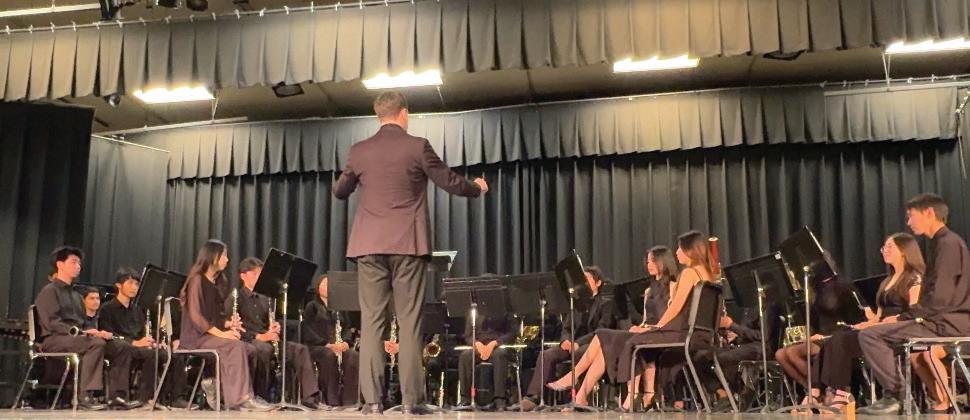
By Akshaj Kashyap
Tariffs may seem inconsequential in the short term, but they often shape the prices we pay and the products we see on shelves. As President Trump’s new tariff proposals make headlines, understanding how they work and who they affect is more relevant than ever. As of May 27, 2025, the majority of tariffs on imported goods have been put on hold.
In simple terms, a tariff is merely a tax on either exports or imports coming into the country, social studies teacher Roy Huang said. The goods with a tariff placed will see a price increase to whatever percentage that the President or Congress sets when the goods enter the country, Huang added.
“The main reason (for a country to impose tariffs) is to discourage the sale of this particular good or service,” Huang said. “So, for this presidency, the tariff is basically to discourage trading or buying products from these specific countries.”
The end result of a tariff is usually to protect domestic industries and domestic workers, social studies teacher Champ Wrencher said. Products arriving from other nations may be cheaper and would compete against domestic products, and therefore the consumer would have free choice to pick the cheaper item, Wrencher added.
“(Consumers) will often choose something that may be manufactured somewhere else, and that causes a domino effect – lack of sales for the domestic company – and then that leads to a lack of productivity, which could eventually lead to higher prices and layoffs as that company struggles to compete with a foreign competitor,” Wrencher said.
Although tariffs theoretically should be a boon for the economy in the long term, there is often a spike in prices in the short term, Wrencher said.
“As people brace for it (tariffs), demand will go up for certain products because they don’t know when prices will ever be
that low again,” Wrencher said. “So that ironically, drives up the price. And so you’re seeing an increase in demand, which leads to an increase in prices, which is all part of a transition.”
The Smoot-Hawley Tariff Act of 1930 is an example of an economic blunder by the United States in the early part of the Great Depression, worsening the effects of the Great Depression for farmers, social studies teacher Paul Harrison said. By imposing tariffs on multiple countries, including friendly nations like Canada, the U.S. hurt their own agricultural industry, he added. A similar situation is occurring right now between the U.S. and China, he said.
“So right now, farmers are starting to get nervous because we export a ton of soybeans to China, and pork, tons of pork,” Harrison said. “Because of the tariffs by the U.S., (China) has raised all these tariffs on those agricultural goods (...) If this continues, the farmers are going to have to destroy their product, or otherwise they’ll flood the market and totally destroy the price of it.”
Wrencher recommends the St. Louis Federal Reserve website for anyone who wants to learn more about important economic topics, he said. It is vital for young people to understand tariffs and trade policy, even if they don’t plan on studying economics or related topics, to ensure they are successful in life and aren’t taken advantage of, he added.
“One of the most important things that people need to learn is to conserve, curb their desire to consume, to buy things,” Wrencher said. “Why would you pay to go to a park and take a hike when you can just take a walk around your neighborhood, when there’s a perfectly free park right there (...) We believe inherently that if we don’t pay for it, it’s not quality. We think we have to spend it, to have some kind of merit or a real impact on us, and that is a detriment to our wallet because we’re fooled into thinking we have to pay for everything.”
By Namana Balakrishna
Graphic novelist and MHS alumnus Thien Pham visited the school on April 25 to talk about his book “Family Style: Memories of an American from Vietnam.” The Vietnamese Student Association (VSA) and the MHS Book Club collaborated and hosted a luncheon during lunch for students to get their books signed and meet the author.
The day consisted of multiple events hosted by Pham, librarian Mia Gittlen said. He had an assembly in the theater third period, a luncheon, and a creation workshop during sixth period, she added. Both the luncheon and the creation workshop were hosted in the library.
“Students were able to sign up and come to the library, and he walked through creating a five-panel journal comic,” Gittlen said. “In doing so, he shared reminders about storytelling, about photography, those kinds of ideas of starting off with the wide shot and then coming into the action. He did a comic on the big screen live for us. So it was very cool to just watch him.”
Book club president and VSA co-vice president Jannet Nguyen helped host the luncheon, she said. The luncheon specifically was only open to members of VSA and Book Club.
“It’s a closed event just to celebrate those groups because we were the ones who were at the meeting,” Nguyen said. “We read the book, and we just really wanted to meet him. I mean, it’s an incredible experience to be able to meet an author that you’ve read and you admire.”
The author visit was possible because PTSA helped fund the event, Gittlen said.
“This fall, I went to the PTSA a couple of times,” Gittlen said. “One time was to just share and introduce what I was up to in terms of reopening the library. And at the second meeting I went to, they were just sharing about their budget and their plans. I just asked the question, ‘Would this even be possible?’ So they asked me for a proposal, I submitted it, and they considered it and approved.”
For a first author visit, it was nice to get someone who was connected to the community, award-winning, and has a compelling story, Gittlen said.
“Because of his Milpitas connection, he previously presented at the Milpitas library,” Gittlen said. “He won the Will Eisner Award for best graphic novel of the year, and previously, he won an honor for best young adult nonfiction book. And so that’s really elevated it and catapulted his fame before this book. He’s
written or illustrated two other graphic novels, and now he’s a lot more famous because of this one.”
Junior Candria D’Souza attended the luncheon. One reason she came to the event was because she was a Book Club officer, so it was a part of her responsibilities, she said.
“Also I was curious to see what the author was like, since I have read his book before,” D’Souza said. “He was representing Vietnamese culture, so he was talking about his people, and there was a lot of food that was related to Vietnamese cuisine.”
Gittlen had visited Pham before even reading his book, she said. It helped add another level of depth for her while reading the book, Gittlen added.
“I went to his book launch, and what struck me is just that he’s so dynamic and full of personality,” Gittlen said. “He shared so much background about the book that as I was reading it, it really brought it to life in another dimension.”
Reading ‘Family Style’ reminded Nguyen about her own family and their experiences, she said.
“It was exactly like my dad’s story, except Mr. Pham is younger than my dad,” Nguyen said. “Growing up in Vietnam, going to a refugee camp in Thailand, and then coming to America, getting citizenship – I felt like it literally
could have been my dad.”
For D’Souza, she was able to finish the book pretty quickly as it was formatted as a graphic novel, she said. The book was an interesting read, she added.
“It was also very emotionally heavy, because it talks about his experiences as a refugee,” D’Souza said. “So I feel like it was really informational about a lot of people’s experiences, while also be-
ing able to keep your attention.” Overall, the event was an exciting experience, Nguyen said. Despite only reading one of Pham’s books, Nguyen feels like she has been his fan for so long, she said.
“I got all this experience with him, I got to see him, I met him,” Nguyen said. “He signed my book, he drew me. It was really cool. I feel like he has one lifelong fan here.”


By Sowmya Sundar
In 1998, the California Legislature launched California State Summer School for Mathematics & Science (COSMOS), a fourweek summer program for high schoolers on a variety of scientific topics. Many students at Milpitas High School with an interest in science and math have joined the program.
The COSMOS program is divided into campuses and further divided into clusters, each focused on a topic, senior Oliver Ma said. His cluster was focused on autonomous vehicles, he added.
“I would describe COSMOS as a combination of a research program and a summer residential program,” Ma said. “Some universities have programs for high schoolers where you can spend the summer living there, taking classes, right? It’s not exactly like that. It also has some aspects of a research program because you’re doing individual work and you complete a research project.”
The program began with instruction from both the professor and TAs, the TAs being more involved, similar to how college works, Ma said. After that, they slowly transitioned into working on products themselves, he added.
“We were split up into teams of four people each, because the clusters are pretty small,” he said. “Then, we all got the car base that we were starting off with. We had to use CAD computer computer-assisted design, to prototype components that would hold the different parts of our car. So that’s the physical side, and then we had to use different frameworks for the autonomous navigation
functionalities of the car, which involved artificial intelligence, computer vision, and embedded Linux.”
Junior Leslie Dong attended COSMOS at UC San Diego the summer after his sophomore year, he said.
“I thought it was a really cool idea being able to spend time on the UC campuses,” Dong said.
“They mentioned it was a great opportunity to get awards. Also, it’s relatively prestigious, and it looks good on college applications.”
Sometimes, you aren’t given a good dorm, Dong said. In UCSD, they did not have the best one, he said.
“We had to take cold showers,” Dong said. “Terrible experience, but being around people in the environment, it’s actually really fun. It’s like having that kind of freedom. You know, you’re not used to it as a high schooler.”
COSMOS is a great way to dip your toes into the coursework of your interest, Dong added.
“At the time, I was super interested in engineering. I wanted to be like a mechanical engineer –not anymore,” Dong said. “While it was fun in the moment, I don’t think I would have held up that well, considering I suck at physics.”
Sophomore Arnav Agrawal will attend COSMOS this summer at UCSC, he said. He chose COSMOS over the M.E.T. program at UC Berkeley because it felt more established, Agrawal said.
“I’ve heard a lot more about COSMOS, and the other one is a little more new,” Agrawal said. “I just wanted something that shows experience, and living on a UC campus is a pretty good expe-
rience in my opinion.”
For the application, he had to write a 300-word statement about himself and what he wants to do at COSMOS, Agrawal said. He also had to submit his grades and two extracurricular activities, he added.
“I never really had to think about a statement of interest before,” he said. “It really juiced my brain. I started thinking about how can I connect things in my past to what I want to do in the future.
Agrawal chose AI and machine learning, since they would be very applicable for the future, he said. However, he’s unsure if that’s what he wants to do, he added.
“I just want to experience a bunch of new things,” Agrawal said. “After I experience everything, I’ll always be able to figure out what I really want to do in life. COSMOS is just another step in figuring out what I want to do in college and life in general.”
Some summer programs, such as SSIP, are research-intensive, Dong said. That can be hard for people who know what they want to do, he said.
“COSMOS is definitely much more exploratory,” Dong said. “But it definitely can be geared towards people who want to specialize as well.”
As long as you make the most out of your program, you’ll be set up for success, Ma said.
“You’re not doing it for a grade, right?” Ma said. “No one’s going to go up to you and help you stay on task. I feel like if you really want to get the most out of this program, which you’re paying for and spending the summer on, you should try to get as much learning as you can out of it.”
By Ian Choi
The City Commission might seem like a job for adults, but high schoolers and middle schoolers can make their mark in the local government through student commissioner positions.
Elizabeth Ashley, a junior serving on the Housing Commission (the branch of government in charge of housing and community improvement), decided to join as a student commissioner because she wanted to give back to her community. She thought she would be more involved, but she was happy with her position, Ashley said.
“The commission that I’m in is housing, so students can’t really do as much, because it’s about legal topics, so I mostly just sit in and see what it’s like to be on a governing body,” Ashley said.
Although Ashley can’t directly participate in legal and housing-related matters, she can provide help in other ways, Ashley said.
“If they need help volunteering, they can raise money and raise awareness for the committee.
Then they just ask the high school commissioners to ask Milpitas High School for student volunteers,” Ashley said.
Youth Advisory Commission chair Crystal Ha was interested in the commission because of her brother, who served as the previous chair of the commission, and because of the many events that they hosted, she said.
“The youth advising commission hosted a lot of different events before one of them was the math and logic event, and then there
was also the coding competition, which I also volunteered at and helped out with,” Ha said.
As a student commissioner in the Youth Advisory Commission, their responsibilities lay in meeting every month to plan future events and figuring out the logistics of each event, Ha said.
“I believe I gained a lot of leadership skills and the ability to plan and host events, including what is needed, how it’s required, how to fundraise, and things like that,” Ha said.
Science, Technology, and Innovation Commissioner Aahan Shah saw his position as a way to combine his interest in technology and desire to help out the community, to have a big impact on the community and help develop it, he said.
“I felt that I wanted to do something for my community, so I think this commission really gave me that platform to do so,” Shah said.
Additionally, becoming a student commissioner can help you understand how the government works, how it implements policies, and a lot of other benefits, Shah said.
“I got back great mentorship. I got back great resources. I was able to develop connections with people who are tech professionals, who are ready to serve the community,” Shah said.
There is a student commissioner for most commission branches and you can reach out to serve if you are interested, Shah said.
“Before you go into it, really understand that you’d have to put in the work, you’d have to have the motivation to help out your com-
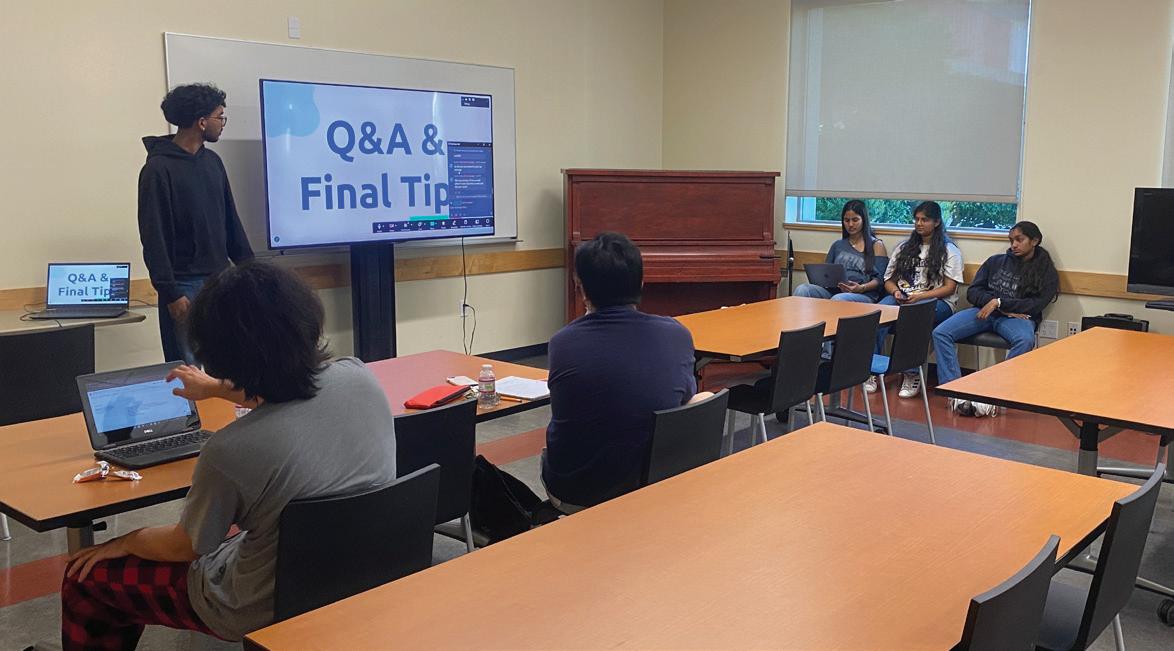
McGarry retires, leaves lasting legacy after decades of teaching, mentorship

By Shrihan Sham
After 35 years in education and over a decade at MHS, English teacher Brian McGarry is retiring.
The path into teaching was fueled by an interest in storytelling, particularly film, McGarry said.
“I started out teaching junior high for nine years, then went into administration for thirteen years and eventually found my way back into the classroom,” McGarry said.
“I studied film in college,” McGarry said. “Analyzing film is a lot like analyzing literature. You’re looking at how things are constructed, how meaning is built, so it just made sense.”
McGarry originally joined MHS as an administrator, but later became an English and film history teacher, he said.
“I burned out 13 years in admin,” McGarry said. “ I wanted to get back into the classroom. I missed the daily banter; I mean, it’s frustrating, but fun.”
Students have changed a lot over the years because of technology, McGarry said.
“We’ve gone from worksheets to laptops and now AI,” McGarry said. “It changes everything–the
way students write, revise, and even the way teachers interact with students. Back in the day, students were excited about using laserdiscs in classrooms.”
Over the years, McGarry has enjoyed teaching books like “The Great Gatsby” and “Lord of the Flies,” he said.
“There are a lot of books, but ‘The Kite Runner,’ obviously, it’s a very adult topic, but the students have all handled it very maturely. And, you know, and got into the students’ experience, or the characters’ experience,” McGarry said.
After retirement, McGarry wants to lead a simple, relaxed life, he said.
“I want to travel, spend time with my grandson, and maybe take some photos. Just sit and read for enjoyment without feeling exhausted from grading essays,” he said. “I’ll probably still work part-time, maybe sub, or do something social.”
McGarry will miss his students the most, he said.
“It’s always been about the students,” McGarry said. “Their energy, their growth – they keep me young.“I’ve been to their weddings, their college graduations … I’ve even given a eulogy at a stu-
dent’s funeral.”
McGarry has been a mentor to both students and staff and is often a go-to person for teachers navigating curriculum or campus culture, English teacher Tonichi Lorenzana said.
Beyond the classroom, McGarry has had a deep impact on student life by leading the E-Tech Academy and supporting school events, Lorenzana said.
“One of the things that I think really speaks to McGarry is just his level of dedication to his students as whole individuals,” Lorenzana said.
In the classroom, McGarry has always balanced strong instruction with life skills, Lorenzana said.
“His students really respect him, and they do learn a lot of different things—content, writing, and kind of how to be a functioning adult,” he said. “He teaches them how to interact with one another appropriately and shows them a level of professionalism.”
McGarry has left a legacy at MHS and the English department, Lorenzana said.
“But honestly, it’s been a lengthy and full career that made a huge impact on literally thousands of people, Lorenzana said.”

By Ilana Ramzan
Treats by Mar is a dessert-selling business run by sophomore Marley Lara, who mainly specializes in baking various chocolate desserts.
Lara became interested in baking and selling desserts when she found out that her friend would be taking her to prom, and she realized how much tickets cost for the event, she said.
“I was like, ‘Okay, how can I make money fast? I could start selling cookies, chocolate-covered strawberries, chocolate-covered pretzels,” Lara said. “Then I did a bake sale on opening day for Milpitas travel softball, and I made $400 to $500.”
At a young age, Lara learned how to cook and bake from her family members, she said.
“I’ve always watched my grandma and mom bake in the kitchen,” Lara said. “Baking is one of my favorite things to do, even when I’m stressed.”
I plan on expanding the variety of desserts I make, Lara said.
“I want to make different flavors of cookies or even brownies,” Lara said. “I want to try making a lot of different flavors, especially cake batter cookies, instead of just regular cookies.”
My mom helped support me the most in this business, Lara said.
“My mom’s my biggest supporter in everything when it comes to school, sports, and even my own business,” Lara said. “My grandmother also helps a lot – getting the stuff I need or the ingredients I need. They’re always telling me what I could do or what I could charge.”
It’s a big struggle to get everything together when I have a bunch of orders for the same day, Lara said.
“For Valentine’s Day, I actually did a box combo of two pretzels, two brownies, two chocolate-covered strawberries, and two cookies, and they were all going to be handed out on Valentine’s Day,” Lara said. “I had to box it right, and make sure it didn’t fall, so that was a big struggle.”
This is something to do in high school, but it’s not what I want to go to school for, Lara said.
“I still want to make more different desserts,” Lara said. “Maybe at the end of junior year, I could have a menu with different things, and it could make me a lot more money.”
Junior Jaye Huddson first learned about Marley’s business from an Instagram post, she said.
“She had posted her account, treatsbymar, and posted that she was selling desserts,” Huddson said.
The thing that I enjoy most
about Marley’s business is that she has great customer service, Huddson said.
“When you text her, she replies very fast. Her prices are convenient and very adequate, and she makes good food,” Huddson said. Her treats are better because she makes the desserts and pastries herself, Huddson said.
“She puts her time and her effort into it, and I think that I also like that I’m supporting a friend,” Huddson said. “I like supporting small businesses and knowing that the money is going to a good cause.”
Lara also communicates very well with customers, Huddson added.
“She answers texts fast and she’s very descriptive on what she’s selling and what you’re ordering,” Huddson said. “She has a good business and makes good snacks.”
My advice for someone who wants to start their own business would be that you really need to spread the word of your business, Lara said.
“Have people spread the word for you and get yourself out there,” Lara said. “You really need to get yourself out there since nobody will know who you are until you get your name out there. If they don’t know who you are, you’re not going to get anything.”
Students who thrift, sell clothing: Their business, strategies, finds
By Ved Vyas
In the age of fast fashion and viral trends, some teens are helping turn thrifting into a form of sustainable fashion.
Senior Nakul Warrier remembers when his interest in clothing first shifted from self-expression to a side hustle, he said.
“My friend Diego started changing up his style, and it kind of inspired me,” Warrier said.
“We started thrifting just to try new fits and experiment with what we liked, then figured, why not sell them too?”
Warrier and his friends started a reselling operation, originally planning to sell pieces online, Warrier said.
“And originally, we didn’t get any traction,” Warrier said. “We got just a couple of friends that said like, ‘Oh, let me cop that.’”
They found success by focusing on curation by selecting standout pieces rather than flipping items in bulk, Warrier said.
“We really saw value in curating — actually talking to customers and explaining why a piece was cool or unique,” Warrier said. “It made it feel more personal, and I think people appreciated that.”
Senior Diego Dannon, Warrier’s friend and business partner, shares the combination of this instinct for business and fashion, he said.
“I was always into vintage clothes,” Dannon said. “We went thrifting, started selling on Depop and Grailed, and I realized I
could actually make good money from it. So I just kept going.”
Learning which items would resell took time and trial and error; some picks that seemed to be sure bets flopped, while some unexpected pieces took off, Dannon said.
“You kind of develop a feel for it,” Dannon said. “Go to enough flea markets, see how stuff is priced, and you start to get it. Sometimes you mess up and end up not selling.”
Despite the ups and downs of the business, Dannon believes that reselling vintage clothes is not just profitable, but also a way to push fashion into a more sustainable direction, he said.
“Fast fashion is just way too fast,” Dannon said. “Brands like Shein — they pump out stuff people wear once and toss. With vintage, it lasts longer. It’s not perfectly sustainable, but it’s better than most.”
Social media platforms and resale sites like Depop, Grailed, and Instagram have been useful, Dannon said.
“Especially Grailed — I sell a lot there,” Dannon said. “And Instagram helps with promotion, just getting your stuff seen.”
Reselling is about creative freedom, sustainability, and reshaping how people think about their clothing, Dannon said.
“I don’t think it’s just about making money,” Dannon said. “It’s about the hunt – finding something nobody else has, and giving it a second life.”
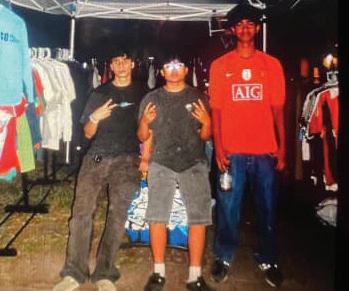

By Jayden Hernandez
There are many job and volunteer possibilities for students, and for those who are interested in sports, many coaching opportunities. Students earn money by coaching kids in sports such as baseball, soccer, and basketball.
Junior Chloe Cabrera coaches baseball for the Milpitas Little League as a volunteer for her younger brother’s team, she said.
“I decided to do this because my dad is a head coach and my brother is on the team,” Cabrera said. “And the whole program is run by my uncle, so it’s pretty family-oriented.”
Coaching her little brother and watching him grow as a baseball player is the highlight of volunteering in this program, Cabrera said.
“My favorite memory is coaching my brother and seeing him improve because he struggles a lot when he doesn’t do well, so I like being able to talk to him and see him actually make improvements and become stronger,” Cabrera said. “Last game, I had to sit down and talk to him because he was really upset, and I was ac-
tually able to get to him and have him listen to me, and that was very memorable.”
Junior Genevieve Nguyen coaches soccer at Kidz Love Soccer and Police Activities League (PAL) Soccer for younger kids ranging from 2 to 10 years old, she said.
“When I clock in, we set up the field with four flags and two goals, and then balls,” Nguyen said. Nguyen works weekends and weekdays at these programs and enjoys her time coaching, she said.
“The Kidz Love Soccer job is paid, and my PAL soccer is volunteer,” Nguyen said. “For my paid job, I get paid $21 an hour and work around three to four hours on weekdays, and eight hours on the weekends. My paycheck comes every two weeks, and usually I get around $200 to $500.”
The younger kids do not understand as much as the older kids, so each group does different drills, Nguyen said.
“As for coaching kids, the little ones are kind of too little, so they don’t really understand sometimes, and we have to help them out even more,” Nguyen said.
Senior Lemayian Keen coaches basketball for Hoopsphere Basketball for kids and teenagers 4 to 17 years old, he said.
“In my class, I will start them off with a dynamic warm-up for 10 minutes, then talk to them about the topic we practice,” Keen said. “Then we go through the drills for 40 minutes, and for the last 10 minutes we scrimmage with the older kids or play basketball-related games with the younger kids.”
Cabrera believes coaching is very rewarding and exciting because she can teach younger kids how to overcome struggles on the field, she said.
“My favorite part about coaching is being able to teach the kids how to deal with failure and how to persevere, just because that’s something that I’ve had to teach myself,” Cabrera said. “And so for baseball, it’s a really hard sport, and you fail 70% of the time and succeed 30% of the time. So it’s teaching the kids to be able to accept that and how you’re not going to get a hit every single time. Making them stronger mentally and just bettering players is so rewarding.”






Luqman Abas
Karl Alteza
Deyonnah Bighem
Teresa Dang
Gabriel Eblacas
Alison Hoang
Stephen Jeyakumar
Elianna Khateeb
Aizah Kirmani
Mukil Kumar
Alina Ly
Christan Manuel Bianca Nguyen
Andy Nguyen
Lantern Nguyen
Aiden Nguyen Ai
Charlynn Nguyen
Daria Nguyen Phuong Minh
Shiv Panchal
Katie Pei-Hua Yu
Kai Pham
Cody Potmesil
Daniel Samson
Habi Seepersad
Chloe Seto
Swayam Shukla
Mrithika Sundar
Chloe Thich
Hayden Tran
Tiffany Tran
Emily Trejo
Ngoc Truong
Alina Tu
Suri Xinh Vu Duong
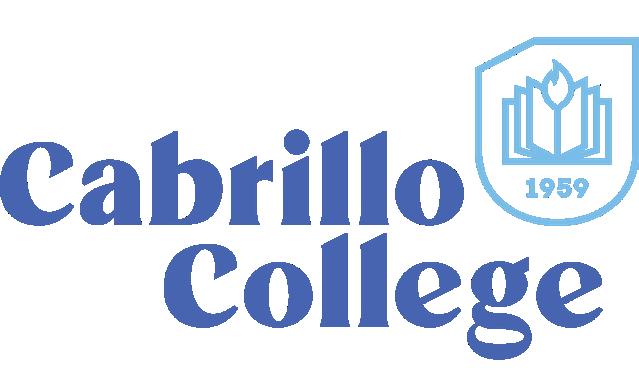

Hugo Garay


Geovhel Anne Bayang
Kyle Ariola
Faaris Asghar
LinchJosh Asuncion
Liya Belay
Jaelene Berjes
Ferina Calida
Lillian Chao
Sizheyuan Chen
Kyle Chiraphanda
Jaiden Chow
Tiffany Chung
Cody Chung
Dwight Dai
Kylie Dang
Lamont Davis
Noah Deleon
Kayla Do
Kaleb Ermitanio
Isaac Flores
Kaydence Foronda
Harveer Gill
Jorel Hernandez
Tongrui Hu
Robin Jeon
Alyssa Johnson
Maria Laya
Kyle Le
Annie Le
Elvis Le
Shawn Lee
Alexander Lee
Einbert Li
Philip Ngo
Hayden Nguyen
Tiffany Nguyen
Anthony Nguyen
Kathy Nguyen
Kate Nguyen
Nicole Cabigting
Khloe
Jordon North
Adrien Padilla
April Ramos
Avneet Rehil
Alyssa Rodriguez
Jason Rojas Pacheco
Sing Siv
Allen Te
Jovia Tran
Jadon Tran
Regina Tran
Seth Ung
Andrew Viet Nguyen
Marcus Vo
Mia Whiteman
Isaac Williams
Edward Wong
Nacoda Wyatt
Caleb Xavier Millan
Sin Yeuk Tsang
Miguel de Los Reyes

Malyna Hoang
Farzana Nazari
Dalena Nguyen Isabelle Plascencia

Mihir Ahluwalia
Dominick Avalos
Camila Kulkarni
Matthew Ladringan
Patrick Lucero
Ayanna Medina-Ashby Ayaan Naggi
Troy Ninh
Kimberly Nguyen
Virginia Rowe
Jessica Tran
Alanna Tu
Vinseth Valdez

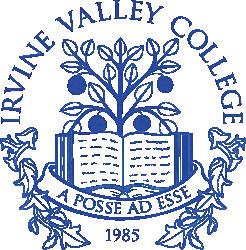

Malea Acker Ayane
Esa Ansari
Miles Atkins
Micah Corpuz Alyanna
Carmela Diez
Crystal Gallegos
Petra Garcia Joy
Nicole Gardner
Lydia Gonzales
Mykah Hoke
Alex Jaquez
Tuongvi Le Thi Le
Grace Liu
Connor Long
Joshua Marquez
Jayden Montero
Giselle Morales
Richard Nguyen
Xuan Nguyen Anh
Isabelle Nguyen
Brandon Nguyen
Lillyana Santana
Donovan Spannagel
Emily Tran
Vivian Tran
Annika Wang
Nakul Warrier
Nathan Wong




Danon
Mia Foster
Aiyana Montes-Taylor April Price
Destiny Solis
Nicole Zesiger






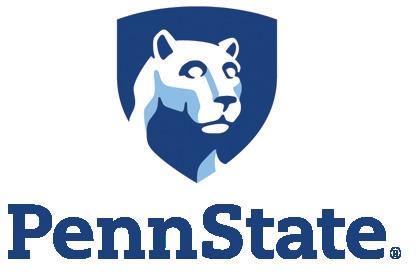
















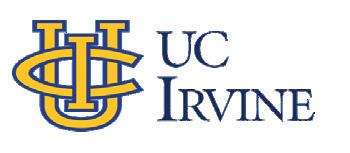








Opinion: Cryptocurrency use is safe, possesses financial benefits
By Jerry Yong
When people hear about cryptocur rency, they tend to associate it with shady criminal activity and volatile pricing. Despite the major successes that this technology has man aged to achieve in the past few years, cryptocurrency still struggles with the tarnished reputation of years past.
Actually, it is the perfect time to start reconsidering the po tential daily use cases of this technology, with applications ranging from streamlined digi tal currency transactions to verifying bets on virtual platforms.

One of the most widespread misconceptions of cryptocurrency is that it is being used for illicit activities. As of 2024, only around 0.34% of all crypto
By RebaVishwandhini Prabhakhar
In the Stock Market Club, students learn about the basics of financial markets and participate in simulation market games.
The club offers an introduction to investing for high schools students, secretary Einbert Li said.
“We make slideshows every week and present them during the meetings,” Li said. “They each have a different goal, for example, teaching students how to invest, trade stocks, or analyze companies.”
The primary purpose of the stock market club is to educate students, vice president Harish Manukonda said. The club does not try to tell them what to do with their money, but gives them all the information they need to invest effectively, he added.
“We teach them the fundamentals,” Manukonda said. “We explain how the stock market and economy work, and we try to persuade them away from riskier investments.”
The meetings are structured to be interesting and keep students engaged, senior Swayam Shukla said. There is a Kahoot during each meeting that tests the students to see what knowledge they have retained, he added.
“Sometimes, I sponsor the prize money for the Kahoots,” Shukla said. “I want to encourage people to learn more about stocks.”
In addition to learning activities, students get a chance to participate in mock competitions, president Pranay Jain said.
“We have virtual stock market competitions through platforms like MarketWatch,” Jain said.
transactions were being used for illegal purposes, according to cryptocurrency crime investigators Chainalysis. Within this number, over 80% were cryptocurrency scams. This means that less than 0.068% of all transactions were related to illegal activities. Cryptocurrency may seem to create an atmosphere of questionable dealings, but so does any other currency that isn’t monitored at all times, like
Beyond the myths, cryptocurrency offers new ways for average citizens to benefit from modern technology. One development that has grown sizably over the past few years is stablecoins. This recent form of crypto aims to reduce the volatility of traditional price-fluctuating digital currencies,
and a starting sum of virtual money which they can invest in any company, and at the end of the month, we see who makes the most profit.”
Recently, the club’s investment strategy has been impacted by economic conditions, Jain said.
“Our investment strategy has changed,” Jain said. “It’s more volatile, so it’s good for people who like gambling.”
The volatility makes it difficult to buy the same stocks as before, Shukla said.
“You should trade the opposite way under Trump,” Shukla said. “His actions have all been the opposite of the previous few presidents,” he added.
Knowing how and when to invest is important for high schooler students, Jain said.
“As they grow and have more freedom with money, they should know how to spend it,” Jain said. “For beginners, low-risk investments are better.
“We give people a month
and instead stabilizes the price by linking it to an external commodity, such as the U.S. dollar or gold.
One popular option is USDT, also known as Tether. USDT was launched a decade ago and this stablecoin is tied directly to the U.S. dollar and has remained steady at one dollar. This option allows users to send money and payments through alternative routes, effectively bypassing long waiting periods and fees typically associated with the traditional banking system.
One specific use of USDT would be as a replacement for your regular credit card, allowing you to directly pay for purchased goods and such instead of relying on a bank to display your balance digitally.
Right now, many students who pay for their own purchases use a phonelinked payment system, such as Apple Pay. Whenever you send money through this system, there are fees along every single step of the way. When you go from your bank account through Apple Pay, a fee gets taken. When the payment terminal accepts the payment, it takes another fee for itself. Then, the ending bank account may take another processing fee, all of which add up to create added costs and worsened security for your



payments. With cryptocurrency, you would be able to directly send your payment to the end seller with no intermediate services required. This means that your payments will go through much faster and more securely.
One country that has been making major moves in cryptocurrency is El Salvador. In 2021, it became the world’s first country to accept Bitcoin as legal tender, marking a significant shift in the public perception of the popular cryptocurrency. This change now allows El Salvadorians to pay their purchases at businesses with bitcoin, and there are plans for greater cryptocurrency innovations like a crypto city and more crypto businesses.
Overall, cryptocurrency has greatly evolved over the years, and the number of users continues to grow. With the increasing public awareness and use of of cryptocurrencies, we might eventually see a future led fully by crypto not too long from now.

By Connor Long
Many Americans lack financial literacy and have little understanding of money aside from knowing how to create a simple bank account. Those lacking financial knowledge may run the risk of going into debt and being unable to achieve their dreams. It is important to understand personal finance early in life, to know how to budget and plan for long-term retirement goals while avoiding debt.
Today, teens receive allowances or have jobs. Usually, the money earned comes in the form of cashcash or by check. Combined with a basic checking account, income and spending are fully trackable. However, growth via only saving does not amount to much in the long run.
The easiest form of growing money is through the bank. Each month, banks pay small amounts of money called interest as an incentive to keep holding money in their accounts. Interest rates vary across banks and fluctuate based on the


state of the economy, but are usually a small percentage of the money held in the account. For example, 3% of your $1,000 savings account will be paid to the same account.
There are two main types of deposit accounts: checking accounts and savings accounts. Checking accounts are easily accessible and earn little to no interest, while savings accounts are more restrictive, but earn higher interest. Some forms of savings include money market accounts and Certificates of Deposit (CDs).
Money market accounts offer higher interest rates, but require a higher minimum deposit. They also have more restrictions on withdrawals for each month.
CDs are temporary accounts, with term lengths ranging from three months to five years, depending on the firm. Once a term starts, premature withdrawals will incur a penalty of some of the interest that could have been earned. Once a term ends, the money is returned and is usable again. Unlike other accounts, the interest rate stays the same, allowing for sustained compound growth each month.
Deposit accounts are insured by the Federal Deposit Insurance Corporation (FDIC). Each account is insured for amounts of up to $250,000 if banks lose money.
For example, if robbers steal from your bank, you lose nothing. With deposit accounts, you can split your money to provide for wants, needs, and long-term goals. When living on your own, your paycheck should mostly go towards necessities such as food, utilities, rent, and fuel. The small remainder should go into investment,

By Harold Hong
On March 4, President Donald Trump issued 20-25% tariffs, a tax imposed on goods and services imported from other countries, on Canada, Mexico, and China, according to PBS.org. Trump intends to promote manufacturing in the United States and protect jobs with his tariffs, according to the BBC. However, many unwanted side effects have been plaguing the economy because of the tariffs, such as the prices of every day products rising, per the BBC.
This conflict is known as a trade war, with several countries im posing retaliatory tariffs on the U.S. The most recent tariff was imposed on May 13, 2025, with the product taxed being commercial aircraft engines and parts, according to Piie.com. The U.S Commerce Department cites these commercial aircraft engines and parts as a threat to U.S national security, per the source.

tic products by 6.4%, and vegetables and fruits by 4%, according to CNBC News. These price raises are a result of Trump’s tariffs and the reciprocal tariffs put on the U.S by other countries, per CNBC News.
Walmart, Target, and Home Depot have stated that Trump’s trade policies will cause major product shortages and price spikes, according to Axios.com. These retailers are reportedly “pressuring suppliers to absorb extra costs.”

Chinese online retail stores
Shein and Temu recently warned U.S. customers that the price of their products will rise starting late April because of the tariffs, as stated by the BBC. Due to the price increase, the Shein and Temu apps’ popularity has sharply declined.
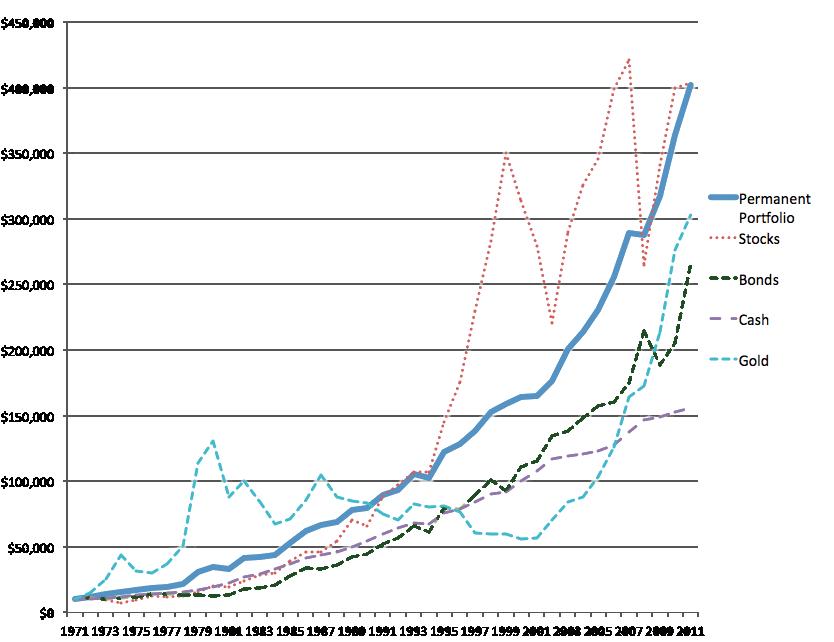
long-term savings for retirement, or for a large goal like purchasing a car or house.
Another source of growth is investment, which can be in the stock market or in bonds.
The stock market encompasses all public companies around the world. People buy fractions of a company called shares, becoming shareholders who now hold a piece of the company. In the United States, the market operates on weekdays from 9:30 a.m. to 4 p.m. Eastern Standard Time (EST). Stocks are long-term investments, and should be held for at least one year to pay less in capital gains tax. Typically, investors buy when prices are low and sell once prices are high. Stocks may not always grow, but investing with higher risk may yield higher returns.
tains a federal funds rate of 4.33%, so the highest interest offered by banks will be around 4%-4.4%.
Even after interest, inflation may decrease the value of your money. Typically, interest rates above 4% are safe from inflation, which averages at around 3% each year. To measure the real interest gained after inflation, subtract the inflation rate from the interest rate.

Government bonds are issued by federal, state, or local governments, and buying bonds places an “IOU” in your pocket. Bonds grow at a fixed interest rate for however long their terms are, typically 20-30 years. In accordance with the Full Faith and Credit clause of the Constitution, each bond will be repaid by its original price plus its interest once the term expires.
Bonds and bank accounts are guaranteed to grow, but not always enough to account for inflation. For these assets, higher interest rates are ideal, so consider waiting for interest rates to change before putting money away. As of May 2025, the Federal Reserve main-
One key element of personal finance is taxes. If you work, you pay taxes. Each state has income tax brackets, meaning that you’re taxed differently depending on your income. The higher your income is, the more you are taxed. Filing between people will vary, as some may qualify for tax breaks or flat-out exemptions. For all single persons, the state of California allows for deductions of around $5,000, as those earning under that value do not pay income taxes. If married, the deduction doubles to around $10,000 per couple. Certain actions are tax-deductible, such as donating to charity, reporting mortgage interest, and reporting student loan interest as well.
By understanding the intricacies of personal finance, you can start making better use of your money earlier in life. Hiring a financial advisor becomes unnecessary, as you will become proficient in money management over the years by following common financial principles.

Apparel prices are estimated to rise 17% because of the tariffs, and prices are expected to rise on all fronts, from groceries to car repairs, according to APNews. The price of leather products is estimated to rise 18.3%, electrical equipment by 10%, rubber and plas-
Nintendo, a massive Japanese video game corporation, announced that its upcoming console, the Switch 2, “will experience price adjustments from those announced on April 2 due to changes in market conditions,” according to the official Nintendo website. Nintendo added that “other adjustments to the price of any Nintendo product are also possible in the future depending on market conditions.”
in the price of everyday products. Fortunately, Trump states that his tariffs will only temporarily hurt the United States, so the price inflation of these products may not be permanent, according to Reuters.com. Financial Times graph illustrates the effects of
Best Buy, an American-based electronics retailer, also expects price increases on its products, as the company mainly sources its goods from Mexico and China, according to ABC News. Ultimately, Trump’s mission to re-establish manufacturing in the United States unfortunately comes with a rise
RATING: 3.5 out of 5




By Vasista Ramachandruni
The movie “Sinners,” starring Michael B. Jordan, Miles Caton in his debut, and Hailee Steinfeld, is a period adventure/horror film released on April 17. The movie, set in 1930s Mississippi, follows twin brothers, Smoke and Stack, both played by Jordan, as they work to set up a new bar on their return from Chicago. The movie was a great watch from the second half onwards, while the first half is the basis for the bulk of the action covered in the second half. They serve to balance each other, making for overall great entertainment.
The setting of the movie absolutely nails the spot. Dirt roads, old-fashioned stores, vintage cars, and the scattered plantation towns make the audience feel directly transported to the 1930s. Focus on
the characters and Southern accents throughout all of the characters really sells the atmosphere.
The characters themselves all have great backstories. Stack and Smokes’ backstories as ex-gangsters in Chicago explain all of their actions throughout the movie, from buying the property for “Club Juke” to their infamy as ruthless gangsters. Miles Caton’s pastor father serves well to explain both Caton’s actions and the overall story itself as it develops.
However, the film does have a few issues. The horror aspect of the movie relies mainly on a few sudden cuts and clips rather than really attempting to scare the audience. The main action scene is too fast-paced for viewers to follow without it becoming a blur, and a large part of the plot of the movie occurs within 2030 minutes, with the first half being used merely as a buildup. Too much and too slow of a buildup makes the movie te-
dious to watch in the first half.
The story is great, reconnecting to Chicago towards the end of the movie, and the twins’ business setup in the first half, leading to the sequence in the second half. However, the revelation at the end, meant to showcase 1930s racism in the South, appears forced. It did not integrate with the rest of the story like all the other parts, and there were scenes that served no real purpose.
Jordan fits and plays his roles perfectly, getting every part of the characters right and making it hard to choose someone to play the role better. Steinfeld also captures the difficulties of being more connected to African American culture despite being ethnically White. The same tensions were captured amazingly too, with the twins’ business being racist towards Whites.
Overall, the movie, with excellent setting, storyline, second-half screenplay, casting, and characters, makes it a decent watch.
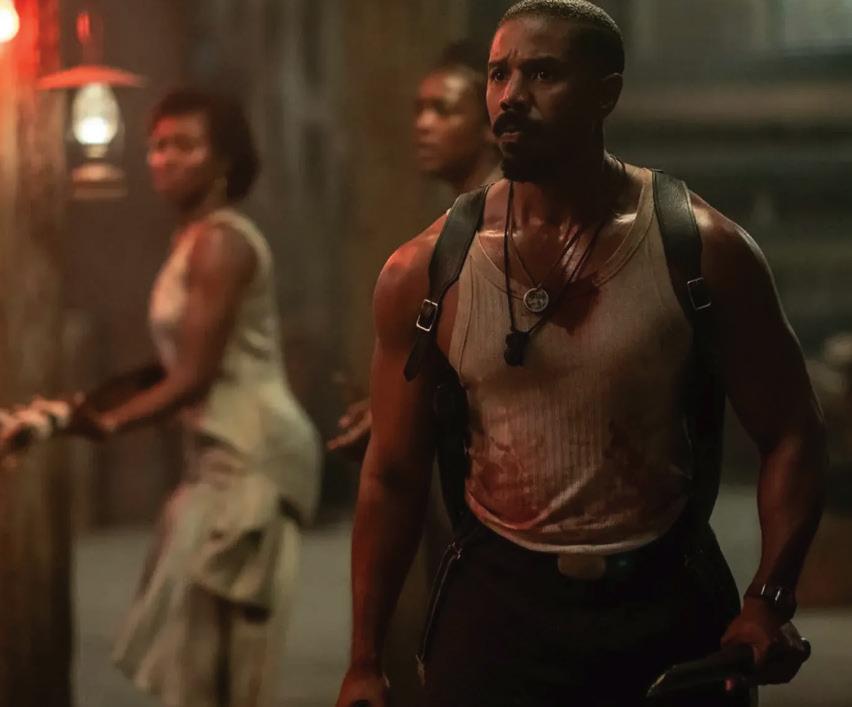
RATING: 3.5 out of 5




“Until Dawn,” a horror movie directed by David F. Sandberg, was released on April 25. It provided an interesting addition to the horror genre. The story follows Clover and her group of friends as they are trapped in a mysterious time loop and must survive until dawn.
This movie is an adaptation of the original “Until Dawn” video game, which came out in 2015. The original game’s main gimmick was the sheer number of choices that each character could make due to the revival system, which reset the night when all of the cast died.
The visual storytelling is one of the strengths of the movie, with dim and narrow mazelike corridors that build up a sense of claustrophobia and excellent lighting that creat-
ed shadows and darkness that gave the idea that something was just out of sight. The clearly supernatural environment created a sense of unease, and you could not predict what would happen next.
Another strength of the movie lies in the variety of dangers and deaths that Clover and her friends face. From masked slasher villains to environmental disasters, nearly no threats repeat throughout the movie. This kept the story fresh and created anticipation about each new threat.
The main antagonist of the movie, Doctor Hill, is an interesting character. Unfortunately, he was not fully fleshed out in the movie.
His backstory and motivations are not explained, and none of the things he does are deeply explored.
The pacing, however, could have been improved immensely. Although the movie initially offers us many nights of terror, the story skips straight from night three to

'Warfare' stuns with coldly realistic storytelling; shows brutality of war
RATING: 4.5 out of 5





By Ronak Srivastav
The movie “Warfare,” directed by Ray Mendoza and Alex Garland and released on April 11, 2025 adapts the real-life story of American Navy SEALs, which include Ray Mendoza, carrying out a surveillance mission in the Iraq War in 2006. In the first half, the movie builds up tension by introducing a plethora of characters, like Sam the LPO, Jake the assistant officer, Ray Mendoza as a communicator, Elliot as the lead sniper, Tommy as a gunner, John as a communicator, and Frank who is another sniper. The second half, where everything goes wrong for the SEALs, makes for a compelling story that captures the true essence of war.
emphasized how this was an event that actually happened in real life.
In the second half of the movie, the acting shone through to show the viewers how brutal war is. Sam and Elliot are critically injured, and their actors, Joseph Quinn and Cosmo Jarvis, respectively, show such clear emotion and pain for every single movement they make while constantly screaming and begging for narcotics that it again immerses the viewer into the movie. Other non-injured characters like Jake were also desperately seeking reinforcements from their higher-ups, and even lying to different branches to get Sam and Elliot evacuated faster to keep them alive. Their despair throughout every minute of the second half of the movie just serves to elevate the tension further and further.
night thirteen with no explanation. This breaks the story’s immersion and provides no benefit to the character development of the cast other than more trauma.
The concept of the time loop could have brought much more enjoyment to the story. We could have gotten to see the strategies that the group employed evolve and see how the pressure and deaths affect the group as the nights progressed. Clover and her friends could have slowly uncovered secrets and mysteries about the setting and found their own way out.
In conclusion, “Until Dawn” is a decent horror movie and adaptation of the original game. It didn’t fully make use of its concept and could have improved its characters and pacing. Although a more cohesive script and compelling antagonists could have elevated this movie into something greater, it is a decent experience and a good watch for movie enthusiasts.
The movie starts off with the SEALs finding and infiltrating a house, which they could use as a vantage point to scout out for enemies. They practically kick out two families and isolate them into one room during this takeover process. Then, as they look for enemies with a sniper, an enemy throws a grenade into the house, injuring three of the soldiers. Everyone realizes that they need to get out of the house, but after they call for reinforcements, more trouble ensues. The rest of the movie deals with how the SEALs can escape out of the house while keeping their injured comrades alive.
The film’s biggest appeal is definitely its immersive sound production. For every situation, like when the SEALs have to infiltrate a house at the start of the movie, there are realistic sounds like crickets chirping and the footsteps of the soldiers. The explosions, grenades, and gunfire also all sound very realistic, and the sound production as a whole
Another thing that “Warfare” does extremely well is blur the lines about how the locals in Iraq feel about the Americans. Their houses were looted, pillaged, and brought directly into the battleground, which makes the viewer question who truly was victimized throughout the movie and who was in the “right.” This uncertainty that the viewers feel emphasizes how well Mendoza and Garland did in displaying that no one wins in war. The movie also has some very brutal and bloody scenes, so if you don’t typically watch war movies in general, then “Warfare” may be a little too much for you. The first half is also still slow before Sam and Elliot get injured, so even with its good qualities, not all viewers may necessarily enjoy the movie. However, if you want to watch a film in which you can truly feel and learn about what soldiers have to go through in war, the film’s sound production and acting combine for a very realistic, yet sensational production.
Hawaii California




















“Drop” is a thriller about Violet Gates played by Meghann Fahy, a widowed mother going on a date and getting airdrops threatening her to kill her date or suffer grave consequences. The movie is very entertaining, with its only weakness in its underexplored plot. Violet was originally in an abusive relationship with her husband before the events of the movie. I originally expected the story to revolve around Violet’s past trauma, but the movie went in a completely different direction.
The movie had incredible pacing. Every part of the story was connected and kept me interested. Each moment in the story felt important, and it was hard to guess what the main character was going to do next.
The plot was carried by its pacing. The story focused mostly on what’s happening in the present instead of the




“Lazarus,” a new sci-fi anime series, was released on April 5. Directed by Shinichiro Watanabe, the director of the iconic 2001 anime “Cowboy Bebop”, the anime offers stunning visuals, fluid action scenes and choreography, and a jazzy soundtrack. However, the characters are underdeveloped and not interesting. New episodes are released on Saturdays on Adult Swim and Sundays on Max, according to Imagine Games Network (IGN).
yano) acrobatic maneuvers, parkour, and playful style of combat are especially exciting to watch.

The anime is set in the year 2052. Neuroscientist Dr. Skinner (Koichi Yamadera) creates a drug called Hapuna that can miraculously cure anything. Three years later, he reveals that anyone who took Hapuna is destined to die soon. A group of five people is tasked with finding Dr. Skinner and saving humanity.
One of the show’s greatest strengths is its impressive animation and action sequences. The fight scenes have amazing choreography, and the animation makes the characters’ movements seem smooth and natural. Axel’s (Mamoru Mi-
The soundtrack is also composed very well. The music that plays in the action scenes is mainly jazz, and it elevates the excitement of these scenes. Other parts of the soundtrack are composed of thought-provoking and mysterious tunes that complement the mystery surrounding Dr. Skinner. The futuristic setting is very well-designed. Scenes involving drones, robots, and AI show the extent of technological advancement the world has gone through.
On the other hand, detailed depictions of books, Wikipedia pages, and other items of today indicate that not so much time has passed since modern times. Fancy mansions and sophisticated skyscrapers sharply contrast with impoverished slums, showcasing the vast inequality of wealth that people experience.
The main downside to the anime is the two-dimensional characters. Only random details about the characters’ backgrounds and motivations are revealed. Most of this limited information comes from short monologues at the beginning of each episode, which
isn’t enough time to let the viewers understand the characters. Because of this lack of depth, the viewers don’t have a reason to care about or root for the characters.
This problem could be fixed by including flashbacks that explain the characters’ backstories and motivations. Another solution would be to introduce conflicts that focus on these motivations so that the plot is more emotionally compelling. This would allow the characters to feel more three-dimensional and would let the audience feel more attached to the characters.
The anime does a great job of maintaining suspense. It uses a slow-burning approach to the mystery as the main cast follows leads about Dr. Skinner’s whereabouts, and new information about him is slowly revealed. Those who appreciate mysteries will likely enjoy the clues, twists, and misdirections.
Although the characters are lacking in emotional depth, the show is thrilling with great settings, action sequences, and soundtrack. If you’re interested in a fun, action-packed show and aren’t too concerned about the character writing, “Lazarus” could be a great watch for you.

characters’ backstories, with the only exception being Violet’s flashbacks to her abusive husband. There are some plot holes caused by a lack of explanations on the ending of the story and how events played out, but that was hardly noticeable due to how well the pacing was handled in the story.
What made “Drop” entertaining was the incredibly memorable side characters.
The director was truly excellent in connecting Cara (Gabrielle Ryan), Jen Gates (Violett Beane), Phil (Ed Weeks), and Diane (Fiona Browne) to the main plot in important ways while also not letting them take all the spotlight. Each of these characters had their own moments that would have either made or broken Violet’s life. For example, Cara eventually saved Violet’s life and Phil died.
The cinematography definitely had its own style, especially when it came to lighting. When the moment gets intense between two characters, the director darkens every-
thing beside those two characters and shines a stage light on them. Although I personally do not prefer the stage light as the contrast between light and dark breaks immersion, I do believe that it enhances the story and allows the audience to focus on what's going on. What I really liked about the cinematography is the constant airdrops that show up on Violet’s phone to threaten her. It keeps the audience on their toes and really intensifies the situation at hand, making the problem seem urgent.
The movie also has comedic moments, with Matt the server being absolutely hilarious with his energetic personality, which was unknowingly sabotaging Violet.
Overall, “Drop” is a good movie, excelling at its pacing and use of the side characters, leaving no actors’ personalities wasted. Although the movie did not have an incredible plot, it seemed necessary to leave out some details in order to keep the pacing entertaining.

'The Amateur' features great acting, emotions, but lacks thrill, suspense




“The Amateur” was released on April 11, 2025, directed by James Hawes, and stars Rami Malek. Inspired by a book written by Robert Littell, published in 1981, the movie starts off with Charles Heller, a code breaker in the CIA, who is taken to the limit by the murder of his girlfriend in an act of terrorism. Politics and regulations prohibit the agency from taking any action, so Heller takes matters into his own hands.
Malek delivers a good performance that shows Heller’s emotions. Malek is not an ordinary action hero. He clearly shows and captures Heller's fear and sadness. His acting is natural and sincere, and the film attempts to demonstrate how violence might damage individuals. Malek is the highlight of the film and brings depth to most scenes despite the weak script.
The film feels the same all the way through - there is rain, dark locations, and colors. The film
reveals to the viewer that all of Heller’s decisions count. The camera glides smoothly, and there is constant movement, rarely remaining in one place or subject. The supporting actors are not given proper time to shine and that makes the film not memorable. This makes the support actors look like the narrator rather than actual individuals.
There isn’t a lot of suspense or drama in big scenes. Although the film starts off great, the second part gets repetitive and a bit confusing in places. The plot twists are fine, but none of them are as impactful as they ought to be. The movie was not very effective in relaying its message, as most emotional moments do not really relate to the theme.
Overall, “The Amateur” is decent, but it is not really a spy thriller movie and is really slow. There are moments that are actually tense and emotional, with the help of Malek, who delivers his usual excellent performance. It is a good movie to pass time, but if you want a real spy thriller movie, “The Amateur” isn’t the one.
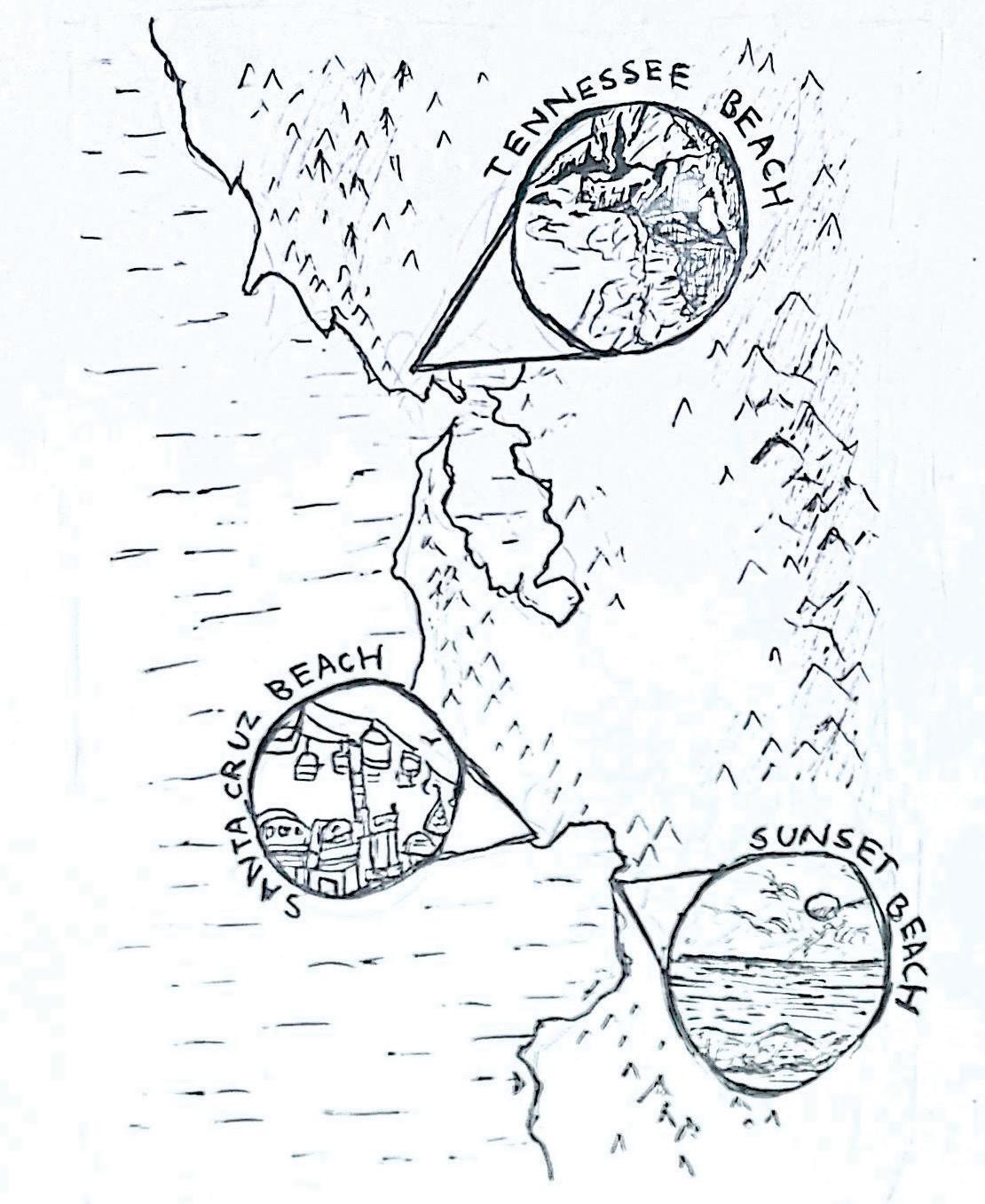
By Marie De Vré
With summertime and high temperatures approaching, we all need something to help cool us down and keep us entertained. The best place to kick back and relax is the beach, where you can lie down in the soft sand and feel the ocean breeze. After all, California is known for its sandy coastline. But the question is: which beaches are truly the best summer hangout spots?
Santa Cruz Beach + Boardwalk: 4.5/5
The Santa Cruz Beach and Boardwalk might be the most popular beach in Northern California. The best part about this beach is that you can walk by the water or just find a space to lounge and watch the sunset after hitting the rides and games along the boardwalk.
The beach is perfect for recreational sports; you can play Frisbee, or hang out at the permanent volleyball courts built into the sand.
Santa Cruz Beach also offers plenty of amenities. Bathrooms are conveniently located near every main beach entrance, and in the city, there is a wide variety of unique restaurants and cafes to choose from. Not to mention that Santa Cruz has some of the best ice cream shops in the area. My personal favorite restaurant is Betty’s Burgers, which offers all sorts of unique burger combos. And for ice cream, I love heading over to Cruz Creamery.
One main downside to Santa Cruz Beach is that it is a long drive from Milpitas. Oftentimes, you encounter traffic on the way there and back, and you have to travel through winding Route 17. Plus, Santa Cruz can get very busy. It’s best to avoid the beach on holidays or weekends, especially in the late afternoon. Overall, Santa Cruz Beach is an excellent beach, with lots of places to visit in the area, but you just have to be mindful of when you visit.
Sunset Beach: 3.5/5
Sunset Beach is an excellent beach for those who just want to relax in the sand or walk along the water. It is far less crowded than many of the more well-known beaches in California, and as the name implies, the view is excellent, especially to watch the sunset.
The drive to get here is a little longer than to get to Santa Cruz beach, being closer to an hour and
By Jayden Hernandez
Summer is coming, and what’s better than enjoying a refreshing treat or drink in the heat of the sun? Eating foods such as a fruit salad, a pasta salad, and a beverage of iced tea are great ways to refresh during the upcoming season.
Fruit Salad
Ingredients: fruits and berries of your choice, honey, lime juice
A fresh fruit salad, including a variety of different fruits, is a healthy and sweet choice for the summer. I made a fruit salad with a combination of sliced strawberries, grapes, pineapples, and with blueberries, raspberries, and pomegranate seeds in their original form. Then, I added some lime juice and drizzled honey on top to add some extra flavor. You can add as much as you would like depending on your preference.
Not only is this treat delicious and very easy to make, but it is also a recipe with easy-to-find ingredients. The balance of fruits and berries with the lime and honey makes a tangy yet sweet treat to enjoy during the hot summer months.
a half as opposed to Santa Cruz’s one-hour drive. But it is easier as most of the drive is via highways, and the road is far less winding. However, parking can be a bit of a hassle. You may need to park a little way away and walk the rest of the distance to the beach.
One major downside to Sunset Beach is that there is very little to do in the area. There are few restaurants close to the beach, and the vast majority of the surrounding area is farmland. The lack of restroom facilities near the beach is also a problem. The only restroom is next to the parking, which makes it a long walk to use the restroom. However, there is an outdoor showering area, so you can easily rinse off any sand before heading home. Sunset Beach is mainly for beach lovers; if you get bored very quickly or are looking for something more thrilling than lounging on the beach, this beach might not be for you.
Tennessee (Rodeo) Beach: 5/5
Tennessee Beach is a wonderful hidden gem along the Marin coastline. The beach is small and secluded, and it offers an excellent place to enjoy the waves. To get to the beach, you need to follow a short hiking trail. This short, 15-minute walk has little elevation and takes you through the rolling hills along the beach.
The drive is a little long at one and a half hours, but it is by far the most scenic. To get to Marin County, you need to cross the Golden Gate Bridge. Being able to pass through San Francisco also offers an excellent opportunity to stop at some tourist attractions or grab a quick bite to eat.
The only noticeable downside to Tennessee Beach is the fact that the beach isn’t as sandy as other beaches. Instead, Tennessee Beach has small pebbles mixed with the sand. These pebbles don’t hurt your feet, and if you put down a towel, you can still relax along the beach and enjoy the view.
If you’re someone who easily gets bored with staying in the same place, Tennessee Beach also offers different hiking trails. All of these are moderate, relatively easy trails that take you through the beach’s surrounding hills. During the spring, these hills come alive with wildflowers and green grass that slowly give way to golden grass and new, hardier flowers and shrubs in the summer. Just be sure to plan ahead, bring enough water, and wear proper footwear.
Ingredients: pasta of your choice, mozzarella cheese, cherry tomatoes, basil, salt and pepper, olive oil, balsamic vinegar or glaze
Another savory option for the summer includes a caprese pasta salad, an Italian salad containing tomatoes, mozzarella, and basil. For the dressing, add salt and pepper to taste, balsamic vinegar or glaze, and olive oil.
To make this light pasta dish, boil any pasta of your choice and then strain all the water. Toss in however many mozzarella pearls you like, along with sliced cherry tomatoes, and fresh basil, then add some salt and pepper. For the pasta salad dressing, add olive oil and balsamic glaze. As for measurements, I put multiple splashes of each and tasted it, then stopped when I felt it was enough.

Iced tea
A fruit salad is also very modifiable, as you can add any fruits of your choice and alter the amount of each fruit you choose. Adding the lime juice and honey is optional, but I felt that it provided a delicious taste and different flavors than just the fruit in the salad.
Caprese Pasta Salad
For a meat choice, which is optional, you could add a cured meat like salami or prosciutto. Other optional ingredients are cucumbers, onions, and artichoke hearts.
The tomatoes and basil add a fresh taste to the pasta, and the balsamic glaze adds a sweeter taste. Adding meat makes the pasta more savory and salty, but the balance throughout the ingredients is perfect regardless.
Ingredients: tea of your choice, sugar, ice, water
For a refreshing drink, iced tea is very simple to make and a delicious option for the summer. To make an iced tea, you can get any tea bags of your choice, boil them in water, and steep for about 10 minutes. Then, add cold water and some ice to enjoy.
I brewed Paradise Tropical tea and added white cane sugar to sweeten the drink. I left it in the refrigerator for some time to make the tea colder, and then poured it over ice.
This tea was very tasty and a great choice on a hot day. Adding a lemon or mint can make the tea more flavorful, if that is what you are looking for.
Enjoying a refreshing summer drink or food is perfect for the upcoming hot weather, and all of these recipes are very modifiable and simple to make!
This dish could be used for a light lunch, and should be served cold. I added salami for meat and added both cucumbers and onions to make it more flavorful. I made a larger quantity of this pasta salad, and was able to enjoy it for a few days after it was made. I enjoyed this dish as it was simple and light, as well as delicious. The process of making this dish was very simple because you just put the ingredients together and mix them.
By Namana Balakrishna
As summer starts to come around, there seems to be an infinite amount of time on our hands. What better way to spend that time than to learn a new skill, like reading oracle cards? Not only can it help give you advice, but it may also give insight into your future.
You might be familiar with tarot cards, which are a more complicated version of oracle cards. Unlike tarot, oracle cards usually have a phrase written on them, usually with a piece of advice or guidance on reading the card. This makes it easier to interpret the cards, whereas tarot only has the name of the card and artwork. To interpret tarot cards, one must be knowledgeable about all 78 cards and their meanings.
Oracle cards come in many different types of decks, each with its own artwork or theme. For example, I own a deck of oracle cards that features a variety of artists. However, another deck could feature artwork of the moon and its phases. As the decks vary, so do the cards and their meanings. Meanwhile, tarot cards are standardized. Like I mentioned before, each deck contains 78 cards, with specific meanings per card. Both types of cards can be found in stores and online. I
personally bought my cards at a Picasso museum in Europe, but other shops like bookstores and your local Target should have them as well.
The first thing you should do when reading your cards is to shuffle them. While shuffling, you should think about the question you want to answer, and really focus on that. I usually shuffle until I think all the cards are randomized. Then I lay the cards in front of me, spreading them face-down so I can see almost every card in the deck.
This part is optional, but I usually ask my question again, focus on it, while I choose my card. I would recommend choosing a card that you feel drawn to, not just blindly picking it. When you have your card, pick it up and put it face up. The words written on your card should give you some sort of answer.
Since each oracle card deck varies, so do the words. Interpretation is usually up to you. Sometimes the deck comes with a guidebook from the author, which gives you perspective on the author’s thoughts when creating the deck. Feel free to consult those. Just remember that whatever card you draw, words are subjective and can be interpreted differently.
After this step, I put my cards
away and try not to think too hard about my reading. However, I do recommend reflecting back on the card at the end of the day or after you get an answer to the question you asked. It’ll help you understand how to interpret the cards and help you become a better reader.
This is just one way to read your cards. Additionally, there are spreads you can do where you pull out multiple cards and lay them in a specific order to answer your questions. Usually, these are used to understand more significant events or situations.
A common spread is the threecard spread, which could be used for a variety of reasons. The three cards you draw can represent your past, present, and future, for example. This version usually tells you what will happen the day you draw the cards, the next day, and what happened the previous day. You can find more ideas for spreads online. Like everything else, reading oracle cards is a skill. With enough practice, you can eventually learn to read your deck of cards. If you’re stuck on anything, the internet is a great tool for help. Once you feel confident in your abilities, who knows, you might be able to read a friend’s future!


By Alice Nguyen
Other than a week-long vacation or an online college course, most of us don’t really have anything planned for our summers, unless you count lying in bed, watching TikTok, or binge-watching your favorite TV shows. But the next time you find yourself reaching for your phone or your TV remote, perhaps you would be better off doing something worth your time, like learning a new hobby, just a YouTube video away.
Bedrotting, or the term used to describe the act of staying in bed for extensive periods, being on your phone, or being unproductive, is a common form of coping mechanism to deal with stress, anxiety, or just a heavy workload.
In moderation, it could be a healthy way to detach. However, done consistently, bedrotting may be a sign of depression, lead to a change in sleep patterns, and may even worsen chronic pain, according to a website article “Are ‘hurkle-durkling’ and ‘bed-rotting’ self-care strategies, or mental health warning signs?” published by Ohio State Health & Discovery.
While not totally cost-free, one activity is cooking or baking.Not only are they important life skills to have, but they are also very calming and relaxing tasks.
If you’re a seasoned cook already, try making something completely out of your comfort zone, cooking dinner for your family for a night, or even hosting a little dinner party for your friends.
If you’re completely new to the kitchen, consider starting off with baking cookies or brownies first. These recipes are relatively beginner-friendly because of the simplicity in the ingredients, like butter, eggs, flour, baking soda, and sugar — nothing too fancy. While cooking is more like going with the flow, baking has more defined measurements and instructions, making it easier for beginners. When I first started my journey in the kitchen, I start-

As the weather becomes warm er, people often swap matte finishes and full-coverage foundations for glowy skin and radiant blush. This icon ic makeup is perfect for the season, but it can be a struggle to maintain a natural-looking look that lasts throughout the day, with the sweat that comes with long-term sun exposure. Luckily, with the right products and techniques, creating and maintaining a bright summer makeup look can be a breeze.
The trick to long-lasting summer makeup is using creambased products. They melt into skin, offering a natural finish and better staying power in the heat. Affordable, long-lasting cream products are widely available and essential for the perfect look.
Applying facial sunscreen before your makeup is always essential, but this step be comes even more important when you’re facing the heat of warmer months. Choose a lightweight, transparent sunscreen, like Biore UV or Innisfree Daily UV Defense. Non-mineral sunscreens pro tect your skin without leaving a white cast, which is import ant for people with deeper skin tones. A budget-friendly option is the Trader Joe’s Daily Facial Sunscreen, which is also sheer and gentle.

Next, instead of foundation, opt for tinted sunscreen, such as the Livetint Hueguard Skin Tint, with your skin shade. This prod-
ed with baking cookies.
But of course, how can anyone cook without herbs? Starting a small garden or keeping some plants in your house can be an affordable and therapeutic pastime. A variety of herbs are low-maintenance, such as basil, thyme, rosemary, chives, and several more. These herbs can adapt to various conditions and grow in any type of soil.
If you’re not a fan of herbs, consider adopting a succulent from Home Depot and wait for it to bloom. I have personally bought a moonsilver succulent for only two dollars, and it makes a cute houseplant that’s easy to manage. You can take this to the next level by taking care of more difficult plants such as orchids or lucky bamboo.
If you’re into DIY projects or all things miniature, consider looking into DIY puzzles or dollhouses on Amazon. While on the pricier side, these miniature dollhouses, book nooks, and sets add lots of charm to any room. Brands like Rolife offer a variety of different sets that range from $16.99 and up.
These kits are basically like LEGO sets, but with more steps and much more detail. The overall building experience can be very calming, making completing the set very satisfying. However, some kits that you may want may be too expensive, too big, and it is important to note that the kits are very time-consuming. If you also want to take this to the next level and turn these kits into a hobby, you can try to make miniature dioramas with common household items, like cardboard or miscellaneous toys. Of course, this is not a comprehensive list of all the hobbies you could pick up over the summer. Even picking up something small and doing it consistently would be worth your time, especially when doing something productive. For example, taking a morning run or watching documentaries to learn something new. Regardless, the bottom line is not to waste your summer.
uct adds an extra layer of protec tion with some light coverage. If you prefer higher coverage makeup, opt for a conceal er to cover your under eyes or spots of discol oration lightly. MAC Pro Longwear and NARS Ra diant Creamy Concealer are both great long-lasting choices. You can mix your chosen concealer with a moisturizer of your choice for an added hydrating finish. For blush, try a few dots of liquid blush, such as the Rare Beauty Liquid Blush or Saie Dew Blush, for a bright pop of color on your upper cheeks. If you’re worried about the color fading away, layer a matching powder blush, like Milani’s Baked Blush, on top. Since blush can make or break summer looks, there are a few variations you can do to enhance it. Using two or three different blush shades, including one of an orange tone, a light pink tone, and a darker pink tone, in a gradient, can add a sunset ef fect to your look. In addition, mixing some highlighter with your blush can create a beau tiful natural glow. I swear by the Rare Beauty Liquid high lighter for a glossy and glit tery look, but the e.l.f. Halo Glow is a cheaper alternative. Choose a lip color that matches your blush color. A glossy lip look would comple ment the rest of your dewy make up, but simply applying a gloss won’t last through the heat. Try using your chosen lip liner and a lip stain, such as the newly re-

leased NYX Lip Drip Lip Stain, and lightly dab setting powder on top. Reapply the stain and finish with your gloss. Though the gloss may occasionally need reapplication, the powder will ensure that the color remains on your
For your eye look, it's important to stick with waterproof mascara and eyeliner. Smudged eye makeup can cause your whole look to lose its flair. For mascara, try the MAC Extended Play Gigablack Lash Mascara for a natural look, and the Maybelline Lash Sensational Waterproof mascara for voluminous one.
There are many possible waterproof eyeliners available, but the NYX Professional Makeup Epic Ink Liner has lasted me through many sunny days and has an effortlessly smooth glide. However, if you’re planning to go swimming, I’d recommend the MAC LiquidLast or Eyeko Sports Waterproof Mascara. Brown eyeliner can soften your look, but choose what works best with your skin tone. Apply eyeliner from mid-eye with a thin tail for a clean, lifted look.

Finally, use a good primer and setting spray to lock in your look. e.l.f.’s Power Grip Primer and Stay All Night Setting Spray are affordable and reliable staples. Remember, these recommendations are just suggestions, since your makeup should reflect your style and comfort. Use this as a jumping-off point to build your own summer look that keeps
Many people have a lot of free time during summer vacation. They tend to sit around with nothing to do, which leads to people becoming unfit.
During the school year, students have more op portunities for physical activity, such as walking around campus, playing for a sports team, or participating in P.E. When school’s out, teens need to find other ways to get moving.
Some places where you can swim are Milpitas Star Aquatics & Fitness and the Milpitas Sports Center, just to name a few (both of these places require a membership).
Swimming is the top summer sport since you can cool off from the hot summer sun and relax.

One solution to this problem is playing sports. Playing sports can be a great hobby to have, as it can be a fun way to stay fit during the summer, along with having many other benefits.
Sports encourage teamwork and problem-solving skills and can help people maintain a healthy weight, develop self-confidence, and reduce stress, ac cording to “Benefits of Sports for Adolescents” by Mis souri University Health Care.
Here are some great sports to play during the summer.
(Disclaimer: Some of the loca tions listed might require a membership or a fee.)
Swim*
Swimming is the ultimate summer sport! Pools are easily accessible, as there are so many, and you can also swim at the beach. Swimming is also a bud get-friendly sport since all you need are a pair of goggles and swim attire.
However, one problem with swimming is that you don’t interact with others. The teamwork aspect of sports is not included in this sport.
For those who enjoy competition, swim ming as a hobby might not be your first choice. However, you can always race your friends.
Pickleball
Pickleball is an

people to play. The playing area is decently small, so you can play in your backyard if it’s big enough, or on the street in your neighborhood. It is also easy to pick up and relatively inexpensive. Many senior citizens can be seen playing this sport, showing the age friendliness of the sport.
The equipment needed to play is a paddle and a couple of pickleball balls, and pickleball shoes, which are optional. One place where you can play pickleball is at Hall Memorial Park, which has two tennis courts and eight pickleball courts.
You can play singles or doubles in pickleball. It starts with an underarm serve, which needs to be bounced before returning. There is a non-volley zone, which is 7 feet from both sides of the net, called the “kitchen”.

to “Riding the Wave of Trends: America’s
Top 10 Fastest Growing Sports” by Tiffany Allen from GMTM Sports, it’s the fastest growing sport in America.
The sport saw a “171.1% increase in participants from 2018 to 2022.”
Pickleball is pretty easy to pick up, and you don’t need a lot of
Basketball Basketball is another great summer sport. Basketball is also very accessible since there are so many places where you can play it. Some locations where you can play basketball are Peter Gill Memorial Park, 24 Hour Fitness, and Pinewood Park. You can also buy a hoop and play on your driveway. The equipment is pretty cheap; you only need a pair of basketball shoes and a basketball, making it very accessible. It is generally better to get basketball shoes, as other shoes might increase the chances of injury.
On those hot, sunny summer days, the Sun’s reflection might get into your eyes and make it difficult to shoot. Additionally, playing pick-up basketball can be very competitive at times.

results of your cut or bulk.
By Ved Vyas
Many gym-goers and student-athletes go on a cut or a bulk either to make changes in their physique, increase strength, or just feel better overall. A cut is when someone purposefully loses excess body fat, while a bulk is when someone builds muscle. However, there are common misconceptions about cutting and bulking that may lead people astray or hinder their progress. It is vital to cut or bulk properly to ensure proper health and physical performance.
Whether you are embarking on a cut or a bulk, slower is better. The recommended weekly weight gain for bulking is 0.5-1% of your current body weight(Walle Bulking: What it is and how to do it). The muscle-building process is slow, and gaining more weight per week is more likely to result in excessive fat gain, which is not necessarily a bad thing, but if your goal is to train for visual changes, then bulking at a slower rate is better.
You can achieve this rate of weight gain with a 200 to 500 daily calorie surplus, or a weekly surplus of about 1400 to 3500 calories(Walle Bulking: What it is and how to do it). You can achieve this surplus by adding calorie-dense foods to your diet. Some healthy calorie-dense foods include nuts, nut butter, avocado, olive oil, whole milk, dried fruit, dark chocolate, and more(High-calorie food list and Snack Ideas).
You can also supplement your food with liquid calories to make it easier to get in more calories without feeling as full. This can mean making protein shakes or having beverages with your meals. You can also try starting your day of eating earlier so that you give your body more time to digest your meals, so that you can get in more meals. Suppose you are skinnier, with a lower body weight for your
height. In that case, you can go towards the higher end of the surplus because you have more potential to gain muscle faster. If you are at a relatively heavier body weight for your height, you can go towards the lower end of the surplus.
More experienced trainees— people who have been in the gym for a while—should also have a lower caloric surplus because they have already filled out their newbie gains and don’t have as many pounds of muscle to gain; meanwhile, beginners can often get away with a loftier surplus of 500 to 1,000 calories because the new stimulus of weight training is so strong that a majority of calories can initially be used to pack on muscle mass.
When cutting, it is generally okay to cut faster than you bulk, because if you keep a weight training stimulus, you can keep a majority of your muscle mass while losing fat predominantly. This is not to say that you should cut very fast; you should still limit it to 0.5-1% of your bodyweight per week if possible to minimize muscle loss and reduce hunger and cravings. It is also important to note that cutting below around 5-7% body fat for men and 10-12% body fat for women can have severe health consequences and is not recommended for optimal hormone production and physical health.
Individuals who are obese or overweight can get away with faster rates of weight loss because they have more fat to lose; a 500-100 calorie deficit can achieve this. Meanwhile, leaner individuals should lose fat more slowly because they have less fat to lose, and if they lose weight too fast, they will end up losing a lot of muscle. These individuals can commit to a 200-500 daily calorie deficit. You can enter this caloric deficit by focusing on eating low-calorie-dense dense high-volume foods that give you a lot of food for a low number of cal-
By Akshata Bhuskat
In today's digital world, social media is very important. Your Instagram feed and highlights are what people mainly notice first when they view your profile. To make your photos stand out, it is important to focus on the right angle, lighting, and background, especially when taking pictures of yourself.
When taking photos, lighting is one of the most important aspects. Morning or afternoon sunlight is perfect for taking the best pictures and creates a warmer glow. The natural light makes your skin look smoother, and the colors of the background look better. If you are taking pictures outside at midday, around 12:00 p.m, the sun can be harsh and potentially ruin the photos. The sun can cast strong shadows, or cause squinting. To avoid this, the sun should generally be behind the camera.
The background of a photo plays a big role as well. Too much clutter draws more attention to it, and away from you. To avoid this, choose simple, clean backgrounds that highlight the subject, which could be you or your friends. Some examples of good backgrounds are nature scenes, such as flowers or grass, or a slightly colorful wall.
ly appealing, you should frame yourself properly. If there is not much going on in the background, you should stand in the middle of the frame. But if you want to show off the background as well, make sure to position yourself accordingly. Often, this would mean being a little off-centered. This allows the surroundings to be included while still keeping you as the main focus.
A trend that has become very popular lately is the use of digital cameras. The best way to use a digital camera is with the flash on, especially in low lighting. A popular place to use it is the beach. When the sun is setting, the digital camera photos make a big difference compared to your phone. A digital camera places more emphasis on the colors of the photo and makes them more vibrant.
ories. These include air-popped popcorn, fruits and vegetables, lean meats, nonfat dairy, and more. You can also try to increase your protein intake because protein is the most filling macronutrient, so you can feel full on fewer calories.
Another tip is to do cardio to increase your total daily energy expenditure(TDEE), so that you can put yourself in a bigger caloric deficit without having to lower your food as much(NIH). It is also not recommended that teenagers go on an aggressive cut or attempt to lose a lot of weight unless they are overweight or obese, because teenagers are still growing and must ensure adequate caloric intake to support their needs. However, a smart, safe, and cautious cut is safe for most people as long as they do not drop too much in their mental and physical capabilities(NIH).
People typically execute cutting phases for 8-12 weeks and perform a little more aggressively than a bulking phase because fat is easier to lose than muscle is to gain(Healthline). People typically bulk for 4-6 months because it takes a long time to build a large amount of muscle.
Many people cycle between bulking and cutting, cutting at the end of a bulking phase to get rid of excess body fat and bulking after a cut to build more muscle. For those looking to gain muscle long term, they should be looking to get heavier in their peak bulked state and also heavier at their lowest weight because this will signify that they have gained more muscle compared to the last time they were either in that bulked or cut state.
While cutting and bulking have their own nuances, both require patience, proper planning, and an understanding of your body’s needs. The key is that gradual changes, whether gaining or losing weight, are more sustainable in the long run and lead to better health outcomes.
Instead of taking photos at chest level, experiment with different angles. Try taking the photos from a slightly higher angle or from the side. These can give your photos a more creative touch. A higher angle can give a smaller feel to the main subject in the picture. It also emphasizes the background more. If you are taking pictures of yourself, you can use a tripod or ask a friend to take the photo from the angle you prefer.
A lower angle can make your subject object look taller and give it an upward perspective. It is also best for you to know what angle your best angle is.
To make a photo more visual-
Oftentimes, the best photos come out when they are candid. Whether you’re looking at something or walking through a garden full of flowers, capturing these moments makes the photos look more alive. To get these genuine photos, it is best to have someone else take the picture. Though this may seem obvious, always make sure to have a clean lens. We may think that our phone cameras are clean, but tiny fingerprints can blur the images without us noticing. A clean lens can give your photos a much sharper look. When cleaning your camera, always use a soft cloth to gently wipe the lens and blow off any dust beforehand.
To keep your feed clean, you may not even need the best quality photos. A way to have a nice profile is to have a theme going on. This doesn’t necessarily mean the colors are the same, but the different covers of the posts on platforms, such as Instagram, match. It makes your profile look less cluttered and more attractive. With minimal effort, you can show your own creativity by experimenting with different styles.
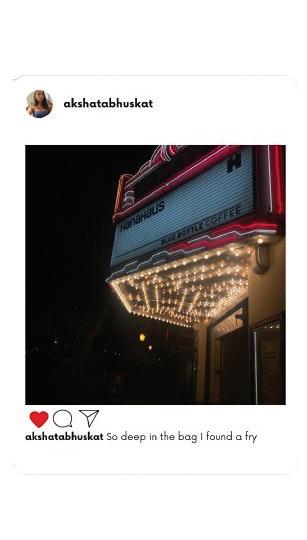

By Uyen Vu
The badminton team won CCS for the fourth year in a row, winning first place for girls’ singles, first place for mixed doubles, second and fourth in girls’ singles, and third for boys’ doubles at CCS May 17, 2025, at Independence High School, according to the CCS website.
At NorCal Badminton Championships, senior Anderson Lin took the title of Boys Singles Champion, senior Ardra Mohan and junior Nihal Kadamba placed third in Mixed Doubles, and senior Philip Ngo & freshman Kehong Ng placed sixth in
Boys Doubles in NorCal Championships on May 24, 2025, at Independence High School, Coach Tommy Nguyen said. Seven students went to CCS out of the usual five to eight players, Nguyen said.
“We have players that can play different events and that excel really well,” Nguyen said. “So this year, we made sure to spread it out to kind of win multiple events.”
There are currently 19 seniors on the team, when in previous years there were usually 12-16 seniors, Nguyen said. They have two to four years of experience under their belt, which they can spread to the younger players, Nguyen said.
“They have that maturity and (experience) playing these matches,” Nguyen said. “A lot of it (is from) performing consistently, and that’s mostly because the nervousness comes from the lack of experience.”
The competition at CCS gets more difficult each year, but the team felt more comfortable and confident this year, Nguyen said.
“For a lot of the players that competed, it’s their second or third, or fourth time playing,” Nguyen said. “So they’re all used to the pressure.”
One of the more difficult matches during CCS was during the semifinals for boys single against

Courtesy of Joanna Butcher
By Andy Nguyen
The boys’ varsity golf team finished 2nd place in the SCVAL El Camino league with a season record of 9-3, according to senior team captain Eusern Ng. This season was harder compared to previous seasons since one of their best players, junior Ian Choi, got injured, he added.
All the other players had to step up their game, Ng said.
“I think it hurt us a little mentally, because we knew we were down one person, but because of our diverse team, we were able to catch up,” Ng said.
Golf is a solo sport, but teamwork is still very important, Ng said.
“Even though some parts are individual, when we total the score, that’s a team thing,” Ng said. “Knowing that we can trust each other helps us improve our score a lot.”
Nobody on the team placed into CCS, but some of them got close, Ng said.
“It was kind of a hard day because we just finished a game like the day before,” Ng said. “So some of us were pretty tired.”
Compared to last season, this year has been a lot more difficult, sophomore Veer Sheth said.
“We lost three of our seniors, that’s half of the playing team,” Sheth said. “Then our number one player was injured, so everyone else had to pick up their pace, do better to compensate.”
One goal is to do better next year, Sheth said.
“Next year I want to play more consistently because this year I took harder courses, so I couldn’t really focus that much on golf,” Sheth said. “Next year I’m trying to focus more and also play bet-
ter.”
The most memorable moment from this season was when I had a personal best, which means I played my best round ever, Sheth said.
“I started off pretty well and maintained that,” Sheth said. “In golf, the fewer strokes you hit, the better it is. The goal of the game is to play consistently, and I played really consistently that day. I ended with a score of eight over par, which is pretty good.”
There are a lot of things to improve on next year, but mainly a stronger foundation to help with the nervousness, Sheth said.
“Because last year, how it was when you’re a freshman, you have seniors,” Sheth said. “Even if you play badly, it’s fine because they drop your score.”
Sophomore golfer Larry Xie thought his season had some ups and downs, he said.
“I’m pretty sure I was only one stroke or maybe two off making CCS,” Xie said. “I had some good matches where I placed first, and shot some good scores. But there were times when I did not play the best.”
He thinks he played better this season than last season, and that the team did somewhat better, Xie said.
“I think I did better because I played better at leagues,” Xie said. “My lowest score this year is better than my lowest score last year.”
His expectations for next year are that they are going to do better than this year, Xie said.
“With Ian coming back from his injury, we’ll play better,” Xie said. “And we’re also getting Ian’s brother; he’s also coming up next year, too. I think next year will probably be pretty good for us.”
Lynbrook, where the game went up to three sets, Nguyen said.
“It was a tense back-and-forth, but our boy in singles came up and was able to finish it out,” Nguyen said. “Then he went on to finals, played another tough three sets, and was able to clinch first place.”
Badminton is typically viewed as an individual sport in the high school setting, so the team does their best to make the sport feel team-oriented, Nguyen said.
“Having teammates cheer and give praises on and off the court really helps out,” Nguyen said. “I think it helps ground a lot of the players, but also makes them feel like this sport affects everyone around them.”
Team support is especially important during singles games, since you are less motivated when no one is watching on the sidelines, senior and co-captain Arida Narayan said. The team has tried to emphasize sportsmanship throughout the season, so their players came out to leagues and CCS for support, Narayan said.
“When your teammates are cheering for you, it makes you feel good about yourself,” Narayan said. “Personally, I like putting on a show. I like doing crazy shots, running around the court, making it entertaining for everyone.”
The team has great support from their coaches, Narayan said. The head coach runs practices, and their assistant coaches, who give technical and moral support, make a strong foundation between the captain and coaches, Narayan added.
“And I know other schools see it too,” Narayan said. “The past two years, we’ve won the Sportsmanship Award for CCS.”
Going from mixed doubles for the season to playing singles for
By Geng Yang Lin
leagues and CCS needed adjustment, sophomore Misheal Shaik said. Singles requires more stamina because of the extra movement, so it is harder than playing mixed doubles, Shaik said.
“The guy covers like 60 to 70 percent of the court, while the girl just covers most of the time,” Shaik said. “If the guy is stronger, it makes sense to play that way because the guy usually smashes harder (and) moves faster.”
Many female players play the “long run,” where the player goes at a moderate pace, but she personally plays at a fast pace, Narayan said. She plays offense instead of defense, playing slices where the birdie goes fast and close to the opponent’s neck and running forward after hitting the birdie to continue attacking, Narayan said.
“When I go to CCS, they’re (opponents) not used to the playing style; it throws them off,” Narayan said. “So it gives me that advantage. That’s pretty much how I’ve won leagues and made it to CCS.”
Being in competitive badminton has taught her that discipline is not always a bad thing, but there is a balance between discipline and having fun, Narayan said.
“I took it way too seriously when I was younger,” Narayan said. “I was so obsessed with winning and following the rules. Then I came to high school, and I was like ‘Wait, this is actually really fun.’”
As a captain, she has noticed that the team has been especially responsive when she asks them to do certain things, Narayan said.
“They don’t give me attitude,” Narayan said. “They understand what I’m asking. I think it’s also (because) I show them that I’m not only their captain, I’m their peer.”
On May 17, 2025, sophomore Arnav Agrawal passed through the CCS trials in second place in his 3200 race and in ninth place overall, earning a place in CCS finals, co-head coach of the track and field team, Austin Nguyen said. Agrawal eventually placed tenth in the CCS finals, Nguyen added.
My reason for doing well on track could be traced to my consistency and the environment that I’m surrounded by, Agrawal said.
“I think it comes with a lot of consistency and a good support system,” Agarwal said. “My parents always drive me to places,
they give me food, they ensure I sleep on time, they make sure I don’t have to worry about things.
Both of my coaches have been supportive all the time. And I think just through consistency and sheer will to run faster, I think that’s what’s got me here.”
Consistency means doing the same thing every day, Agrawal said. He goes to bed at around 10:30 so that he can get eight to nine hours of sleep, he added.
“I think recovery is one of the most important things,” Agarwal said. “And I just keep reminding myself that there’s specific goals I want to achieve. I’m constantly motivated by what I want to do, and that entails consistency.”
A change that he has been mak-

ing with his routine is hydrating himself more and changing his mindset, Agrawal said.
“I didn’t hydrate a lot and getting the electrolytes to make sure that my body’s always recovered in fuel, and also running with the idea to win the race and not just chasing the time,” Agrawal said. Arnav Agrawal got into track and field partly due to his experience in cross country in middle school, Agrawal said.
“I used to play a variety of different sports,” Agarwal said. “I used to play table tennis, I used to play soccer, basketball, tennis, that type of stuff in elementary and middle school, and then when I got to Rancho, I just joined the cross country team for fun, and I realize that I like running in cross country so I thought why not try it out in track as well? And since then, I’ve continued doing track every year,” Agrawal said.
What makes track and field so entertaining for him is the competitive aspect and the numbers that come with it, Agrawal said.
“I like having a certain standard every single time I do something,” Agarwal said. “Because the thing with running is, if you run a mile in four minutes and 30 seconds and the next day you run a mile in four minutes and 25 seconds, you know you’ve improved. So there’s that aspect to it.”
Agrawal had a personal record in the 3200 meters at 9 minutes and 13.5 seconds, Nguyen said. He currently ranks 3rd place in school history, he added.
“We knew he was going to have a really good season,” Nguyen said.
“He would miss Arcadia [track meet sponsored by Nike] just by a tiny little bit, so that really motivated him to push forward and really try to get back to winning races, instead of just trying to run the PR.”
By Ronak Srivastav
The swim team’s medley relay team qualified for CCS finals for the first time in 10 years and placed 16th overall on May 10 in CCS finals, which is the round that determines if players go on to states, according to Athletics Director Joanna Butcher in an email. The varsity swim team had 7 people across all relay team
events and solo events qualify for a CCS event this year, according to Butcher.
The swim team showed a lot of improvement from top to bottom this year in overall speed and results, even outside of the ones who qualified to CCS, swim captain and senior Kai Pham said.
“Last year, we were dead last in the league, and this year we went to second, and we placed in the fi-
nals for CCS,” Pham said.
In previous years, the swim team would barely qualify to CCS through the use of $400 tech suits or fully tapered rest that gave them an advantage by releasing drag, but this year, they already had a fast enough time to make CCS very early on, he said.
“So, any team or person that qualifies for a specific event qualifies for an event in CCS,” Pham

said. “For example, 100 yards is 49 seconds. If you hit 49 seconds, you qualify for CCS, and the top 16 for each event qualify for finals. So we knew we would be good because we hit the qualifying time by 4 seconds in the first meet without tech suits or rest.”
A lot of their success this season in CCS came from other swimmers, like Kerem Bakmaz, stepping up to fill in for the 200 freestyle relay, Pham said. Two freshmen on the team, Spencer Liu and Forrest Lin, were also a huge part in making CCS finals as two swimmers in their medley relay, he said.
“Our two freshmen, Forrest and Spencer, are very dedicated to the sport,” Pham said. “They did a lot of work and motivated us to improve and get faster.”
Liu started swimming when he was 8 years old, mainly to get into shape for basketball, but later on, he decided to start swimming more competitively when he was 11, he said. Liu thought he did well this season, improving his overall swimming to qualify for CCS finals as part of the medley relay and for the individual backstroke event, he said.
“During the swim season, I came in having not trained for three months because I was playing school basketball,” Liu said. “With help from my coaches, I got back into condition by practicing and making steady progress throughout our swim meets and eventually got my first CCS cut time.”
The swimmers who qualified for CCS had a different training regimen that included rest days before and after preliminaries to rest after all other meets in preparation for CCS, Liu said.
“A typical day consisted of a long warmup to reduce lactic acid in
our bodies and then a brief kickset,” Liu said. “Then, we had some speedwork with 50s. There was also dive work and working on our technique. The main goal was to taper and essentially rest our bodies for CCS.”
In the medley relay, the first person swims backstroke, then the next person swims breaststroke, then the third person swims butterfly, and the final person swims freestyle, senior Kaden Rosa said. The relays, despite having individual swimmers, do still involve some teamwork, as leaving early can get you disqualified, he said.
“The biggest thing is knowing exactly when to leave for the person in front of you in your relay based on how fast they usually swim, and practicing relay dives all season helps,” Rosa said.
Junior Justin Lin competed in the 100-meter fly event at CCS and was also a part of the medley relay, he said. He went up nearly 40 places this year compared to last year to get around 10 spots away from CCS finals, mainly due to putting in much more effort and disciplining himself this year, he said.
“Everything I do is consistent,” Lin said. “I’m like the tide, time in and time out. Everything I do is consistent, from when I eat, to when I sleep, to my loved ones, everything I do is consistent.”
All in all, the swim season was very fun, partly because of a good team atmosphere and also because of having the best team success they have ever seen, Pham said.
“Just hanging around with the team, being with friends, and working towards the same goal was an amazing feeling,” Pham said. “Actually winning meets this year made that even better.”
By Javier Antonio Alfaro
The boys’ varsity volleyball team capped off a memorable season, finishing second in the league and showing significant improvement from last year’s third-place finish. Despite tough losses against league rival Palo Alto, the team looks forward to building on this year’s success and aiming even higher next season, junior Daniel Todd said.
Todd has played on varsity for two years and was proud of the team for improving from last year’s third-place finish, he said.
“Overall, the season was great,” Todd said. “I think we did far better in comparison to last year. We finished 2nd in our league this season. We had such an amazing group of boys on our roster, and it was a ton of fun for all of us.”
One of the most memorable moments for Todd was Senior Night, when he celebrated alongside players he’s known for years, Todd said.
“I loved seeing all of the Class of ’25 players that I used to see at open gyms and playing with them at the end of the season with such high energy,” he said. “I’ve become good friends with them and I just love seeing how far they’ve come.”
Despite a few tough losses and a second-place finish, the team is looking ahead to next year, Todd said. There are big hopes and expectations to go further next year, he said.
“I hope that we’ll take first place next season,” he said. “There’s a lot of background training that all of our players may be doing, and I think we can do even better.”
Sophomore Brody K. Nguyen had a great start in his first season playing for MHS, Nguyen
said. The season challenged him in new and different ways than he had seen playing for Bay to Bay and Aloha Volleyball Club, Nguyen said
“I feel that my biggest improvement this year has been my mindset when it comes to always giving 100% in everything,” Nguyen said. “I didn’t always find myself giving my full effort, but playing alongside some of the best volleyball players I have been given the chance to play on the same team as, it really drove me to want to be a better player overall. My biggest goal for next year is to be able to be consistent in defense, have a higher passing percentage than I had this year, and to be able to always be a reliable player.”
This season has been one of the most memorable and fun, assistant coach Hyacinth Simmons said. The boys JV team was especially exciting to watch, she said.
“I would say the season was pretty amazing, especially with this year being the first for our JV boys,” Simmons said. “They really did spectacular.”
The team’s greatest strength was their cooperation and perseverance, Simmons said. They never gave up against the best of teams, she said.
“In the game against Cupertino, they lost against them.” Simmons said. “But they took a set against this A-league team, which deserves to be applauded.”
Several players grew throughout the season, especially freshman, Ryan Dang, Simmons said. Dang joined the team on a whim, having little prior knowledge of the sport, she said.
“He came into the season just because somebody told him it would be fun,” Simmons said. “Without knowing much about
volleyball, he turned out to be one of their best players. It was truly astonishing to watch, and I’m very proud of him.”
Reflecting on the team’s final standing, Todd acknowledged that while there was room for improvement, the season’s outcome
was still a major achievement.
“Three of our four losses were against Palo Alto,” Todd said. “We definitely feel like we could’ve done better, but I personally think our place in second was good and worth it,”
Despite falling short against
a tough rival, Todd emphasized that the team’s overall growth and performance made the finish something to be proud of.
“Now I think we can do better next season.” Todd said. “I think we can take 1st in the league next year.”

bulk of the students were ninth and 10th graders. So in order to staff it the best way we could, we had it limited to just ninth and 10th graders.”
For the upcoming school year, currently 43 incoming freshmen have shown interest in attending the Innovation Campus, Wohlman said. However, incoming 10th and 11th graders who are current students at the main campus have also expressed interest in joining the campus next year.
“I’m hopeful that we’ll have about 160 (students) total,” Wohlman said. “Ideally, I’d like to have about 175. And the following year, I’d like to add 100 students every year. (That) would be ideal, until we get to a capacity of about 480.”
Dual enrollment will be offered, where the colleges come over to teach at the innovation campus during seventh period, Innovation Campus counselor Valerie Lamb said.
“On campus, we have the San Jose City engineering pathway,” Lamb said. “We are hoping to fi-
nalize our second pathway, which is advanced manufacturing with Evergreen Valley College.”
One new course that is being offered to the Innovation Campus for the first time are the digital media production classes, Wohlman said. Students will be able to study video production in professional-level spaces, he added.
“The class is going to start utilizing our professional green space room and our video lab, which looks more like a small TV studio on our editing board,”
Wohlman said. “Our students that want to create short videos, short clips, use digital animation, and create their own video, their own sound groups – they’re going to be able to do that as part of their class.”
Many of the students advocated for a leadership class, Lamb said. It might be a class offered next year, similar to the main campus, she added.
“It’s going to be the elected officials here, along with those who are going to just be active on campus, and they’ll probably be a small group,” Lamb said. “To me, that basically is like letting the
students know, ‘We’re listening and hearing you.’”
Currently, the only science class offered is forensics, but next year chemistry is being added, Lamb said. The district is hiring a new chemistry teacher, she added .
“The hope is just to keep building, too, with the courses that the main campus has that we just don’t have,” Lamb said. “We’re hoping that by senior year to add in physics. So keep on building, (and) keep on adding. Seeing what’s working, seeing what’s not working, pivoting as we need, listening to the students’ voices.”
Next school year, MacBooks will be given to all the students who attend extension at Innovation Campus, Lamb said. The MacBooks are going to have the Adobe Illustrator and Photoshop programs pre-downloaded on them, she added.
“Especially with our engineering classes, and even for the digital media classes, they have to have that software,” Lamb said. “The MacBook is powerful enough to support that. But then, is it also an incentive? Of course, yes.”
LCAP survey gives community a voice, affects future plans
FROM PAGE 1
“We want to look at mental health, and that’s a part of academics and a part of staffing,” Silveria said. “You need counselors to provide mental health services. When someone is in good mental health, their academics will typically go up. But right now, we are looking at a budget that we’re not too sure of … we might be able to say we will get more counselors, but what do we (have to) give up for that?”
Aside from bolstering mental health awareness in the district, the LCAP committee also seeks to help English learners, Soza said at the board meeting.
LCAP committee member and junior Nia Gupte primarily works with English learners, she said. We focus on long-term English learners and their graduation rate, and whether or not they pursue an education after high school, Gupte said.
“We’ve been coming up with ways that staff can support these students, ways that we could
probably modify the reclassification process (testing if a student is proficient enough in English to move up from an ELD class), so it’s not as difficult or confusing for a long-term English learner to reclassify,” Gupte said.
The committee aims to personalize support for long-term English learners in order to raise their graduation rates, Gupte said.
“A lot of the things we’ve been discussing is how can we support these students so that the graduation rate increases for them,” Gupte said. “We’ve been deciding on individualized support for these students, and also what’s on the staff side, such as how they can get more support with their material, and how they (staff) can make it accessible for these English learners as well.”
A large majority of student and parent feedback concerns facilities, resources, and food, Johari said in the board meeting.
In the most recent surveys, students wrote about keeping school breakfast and lunch free, and
asked for longer lunch breaks, Director of Nutrition Services Sandy Huynh said. In a district-wide lunch survey a few years ago, over 700 high school students complained that lunch lines were too long, too many students cut in line, and that there was a lack of line supervision, she added.
“At the high school, we have over 3,000 students, and there is only one lunch period,” Huynh said. “We have continued to have conversations with the administration. We have brought it up with the previous administration, but we also recognize that changing the bell schedule is a challenge.”
The LCAP is the district’s strategic plan, and there isn’t just a single goal they focus on, Johari said.
“It’s (LCAP) the district’s entire budget, so there isn’t one main goal,” Johari said. “It’s got three goals. And it’s really about making the work of teaching and learning, and how we support our students, transparent to our educational partners.”
FROM PAGE 1
ther an executive, any leader in the business field, like being an ethical leader, or pursuing a law degree, getting my JD and then trying to clerk before hopefully going up the court system to the Supreme Court,” Chen said.
Senior Aditi Gupta received the Summa Cum Laude Cord, the President’s Education Award, the Biliteracy Seal for Spanish and Hindi, National Merit Finalist, and the Thespian Vice President honors, Gupta said.
“I’m obviously really happy that I got the awards, but I feel like the things I put the most time into weren’t the ones that I got the awards for,” Gupta said. “Theater I put a lot of time into, but then Biliteracy (Seal) and the National Merit, I don’t really think I did that much to get them. I just feel like there are other accomplishments of mine throughout high school that I was more proud of than the ones that got recognized. But obviously I’m super grateful to be recognized for them.”
Gupta is going to the University of California, Berkeley and majoring in Environmental Economics and Policy, she said. While Gupta
is looking forward to college, she regrets not meeting new people as much, she said.
“I feel like the favorite thing of mine about doing all these different activities is you get to meet so many different types of people,” Gupta said. “I think just to be more well rounded and to not burn yourself out immediately— it’s super important to expand into different circles and meet a lot of different people.”
Senior Thi Le received the Summa Cum Laude Cord, the Maroon Cord, the Thespian Award, and the PTSA Scholarship, Le said.
“I applied through the College and Career Center (for the PTSA scholarship),” Le said. “They have a website with all scholarships open, like MUSD and health scholarships. I am going to use it to pay for my student contribution, because colleges have another contribution, so put it towards that (...) At my school; it’s 5k.”
Le is going to Stanford University intending to major in bioengineering, she said.
“I’m also interested in research, and maybe I’ll switch to biology or chemistry,” Le said. “I am planning to pursue a graduate degree, whether that’s like a PhD
California investigates school funding
ing funded based on enrollment rather than attendance, Reconose said. The CDE then gathered district leaders who volunteered to share their opinions to investigate ideas for a change in public school funding, she added.
“They (CDE) said that they’re going to take that and then put everyone’s input,” Reconose said. “They will do an analysis to see if enrollment-based funding is more beneficial than attendance-based funding.”
Vo believes there is a 50-50 chance that California will adopt enrollment-based funding, she said. The idea has been brought up in the past and has been revisited multiple times, but was never passed, she added.
“I think that (enrollment-based funding) would help all the districts a lot, and I think that most districts right now are in a place where, as with declining enrollment and then loss of one-time funding, especially the COVID funding, we don’t have the funds to support the programs that we want to support,” Vo said. “If we switch to enrollment-based funding, this will help generate additional income for the districts to retain their most qualified and credentialed teachers, mental health therapists, and the tier one support that we really need.”
Other proposals were discussed between districts and the CDE, Reconose said. Some suggestions include raising the base funding for ADA or having the state fully fund special education, which many districts supported, she said.
“Special education is one of the highest costs that we have in our budget, and they are not fully funded,” she said. “The general fund dollars help contribute to the shortage of money that they get from the state and federal (government). If special ed is fully funded, then general fund dollars don’t have to pitch in some money. Then, in a way, it helps us also, because now we get to spend that money on something else instead of contributing it to special ed.”
California has recently tried to push various forms of legislation regarding funding, Vo said.
One of these laws is Senate Bill 64, known as the school choice account, which would enable students to transfer districts, but the California Senate voted against it earlier this year, Vo said.
Bill 64 could bring funding from outside school districts into the Milpitas school district, but if students choose to leave the Milpitas school district, their funding would leave with them and be sent to the school district they are transferring to, Vo said. School districts would also have to worry about the capacity they have for teaching students who may transfer into their district, Vo added.
“Let’s say, if it’s a kindergartner, if we lose those funds, we still have to meet the state requirement of, whenever it’s kindergarten, one (teacher) to 12 (students),” Vo said. “If you have 20 students in class, hypothetically, you still need two teachers, one teacher and one aide, but now you have only 20 students and you would still need to provide that amount (of students) that one teacher and one aide. But now you’re losing four students to another district, hypothetically, if you have that school choice. So I think any dollar amount would be impactful to our district, or any districts.”
Vo believes that the California Senate will revote on Bill 64, but is unsure how government funding will play out in the future, she said.
“I think right now, with the budget, the way it sits, there’s a lot of unknowns, starting with the federal government,” Vo said. “I think that there’s a lot of school choice (being pushed) from the federal government. So I think this will probably somehow make its way back.”
Part of the reason California has not yet implemented any changes in public school funding is due to budget concerns, Reconose said. The amount of funding the CDE can and must give out to school districts is clearly laid out by legislation, she said.
“Last year, the state had some financial difficulties, so they actually depleted their reserve to fully fund the school districts,” Reconose said. “So now the state will work on rebuilding their reserves based on the performance of the tax returns and money that they collected and to make sure that they put back the reserve funds that they used up last year.”
or MD, I don’t know yet.”
Extracurricular activities helped her self-esteem in high school, Le said. She wishes she branched out more or was more brave to do things like competitive events, but she’s also happy with the choices she’s made, she said.
“I feel like I came in as a freshman very scared and anxious about myself,” Le said. “Taking classes that I enjoyed, doing the extracurriculars, and starting initiatives that I loved as well, really brought my confidence. And I feel like now I feel a lot more confident, and I feel a lot more excited to pursue my interest in the future. So I think to anyone who’s unsure of what they want to do, I was there too. Everyone’s there, and it will get better.”
Chen’s general advice to anyone applying to college is for them to know that their college does not define who they are, Chen said.
“Labels are just labels, and what’s most important is that regardless where you go, you stay determined to achieve your goals and never quit,” Chen said. “You can take breaks and take pauses, but never quit. That’s what’s most important.”
“I believe one of the recommendations of this bill was to be able to provide more equitable access to all students because a lot of people are thinking that if, let’s say, a student is in a school that is an underperforming school, if they are allowed or given an opportunity to go to a different school with this voucher,” Vo said. “The student would have the possibility of excelling there, instead of being put in a lower academic performing school.”
Vo hopes that the state revenue for California is higher than anticipated, she said. This way, the state can fully fund Proposition 98 without using its reserves, she added. Vo believes that even if passed, an enrollment-based funding formula may not be effective immediately, she said.
“They (California) have to see how much they can afford to give us,” Vo said. “And so they have to do all the appropriations; they have to fund us. We (don’t) even know if it’s going to benefit us with the enrollment-based, but we have to see if they can afford it. There’s a lot of variables, and that’s the challenge. Right now, it’s so challenging with everything going on.”
